






“We promote deep understanding of the Earth’s systems and history, and engage in interdisciplinary, experiential learning that prepares student for careers solving problems in the realms of water, climate, rock, and life relevant to science and society.”
– Department of Geosciences mission statement, November 2022
Last November, the Department’s faculty and staff held a retreat (facilitated by an outside professional) to develop a strategic plan for our future. In addition to crafting our concise mission statement, we developed high priority goals: to bring more visibility to the Department, to bring more students into our classrooms, to provide more career opportunities for our students through developing new collaborations with industry, non-profits, and government agencies across the tri-state. Our overall objective is to ensure the Department’s continued success and long-term viability. We work amidst the threat to small academic departments felt nationwide in this day and age of declining college-age demographics and the increasing reliance on tuition dollars to keep colleges and universities financially sound. The Department is working on better marketing to students through social media, we are developing internships and a new co-op program, and we are upgrading our facilities and equipment. Thanks in large part to an ambitious and engaging group of graduate students, we are running new outreach programs for schoolage students across the city.
Other developments in the Department are contributing to our vitality and we are keeping pace with how our discipline is evolving.
Geoscience has that duality of applying our knowledge to further understand processes of Earth’s complex systems -- that intertwine water, climate, rock, and life -- while at the same time contributing problem-solving to real-world technologies including carbon sequestration, hydrogen fuel, waste disposal, and energy. The faculty have been incredibly resourceful and active in their research, working in both realms. By my count, our current and continuing external funding – which typically, but not in every case, includes collaborators -- during the past two years has reached $5M. This is outstanding.
The Department currently has 23 graduate students, 13PhDs and 10 MS. Big congrats to Watts Dieterich (co-advised by Aaron Diefendorf and Tom Lowell) and Clark Ward (Brooke Crowley) for completing their MS degrees this spring; several more completions are expected before the end of the year. The Department spent nearly $175K from our endowed funds to support our graduate students, including stipends, five PhD students on 4th Year Fellowship, and summer stipends. Our 4th Year Fellowships are designed to support students who are in the last stages of completing their research projects and the summer stipends are to get our students’ research in high gear dur -
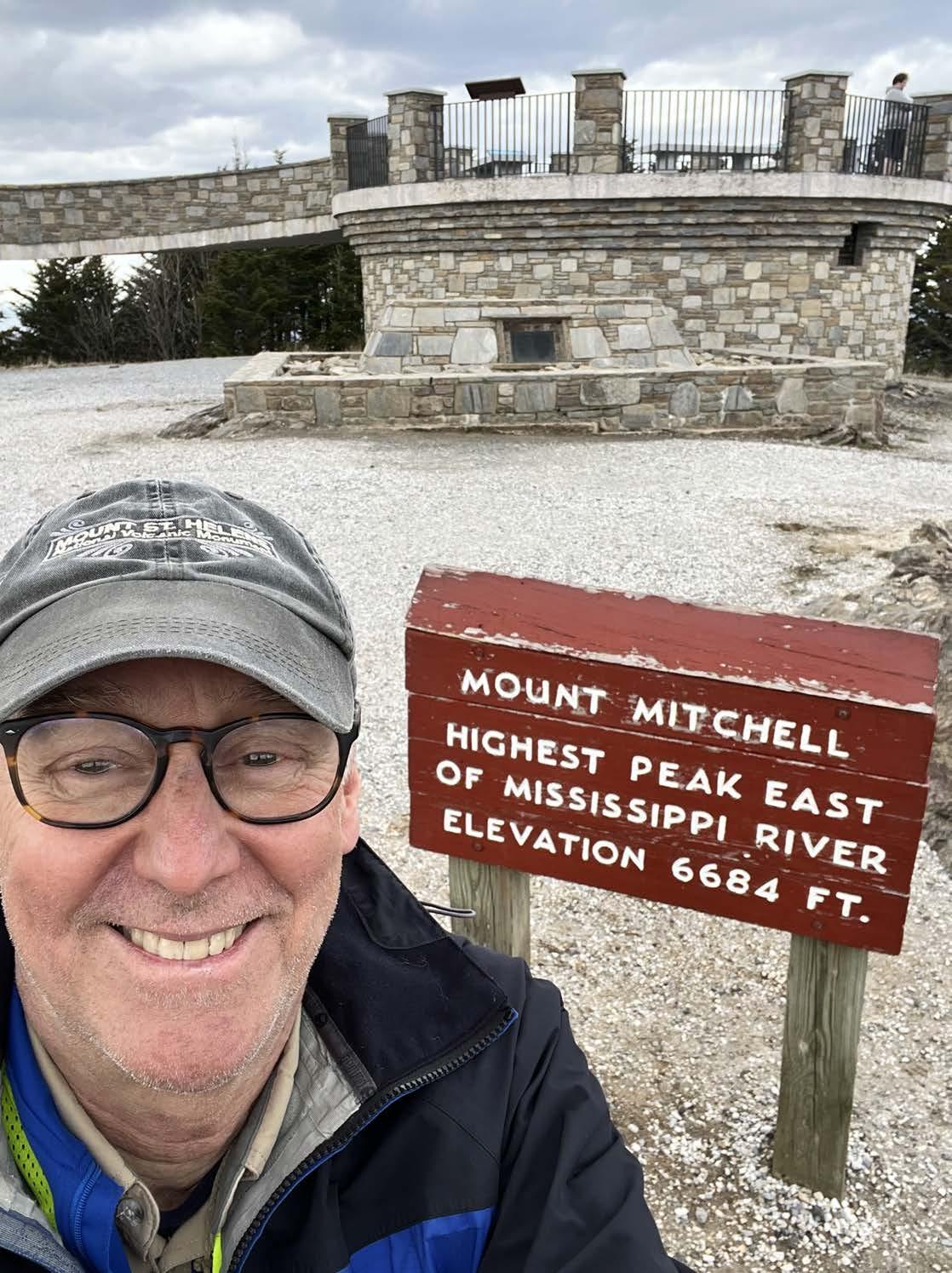
ing that time of year when field work and sample collecting, sample processing and analysis in the lab, and data analysis can be accelerated without the distractions of classes and meetings. Our grad students are working on a wide variety of subjects: sed-strat-paleo in our favorite local bedrock, basin analysis and largescale tectonic models related to the Ancestral Rockies, isotope analysis of lacustrine diatoms, discovering biomarkers of ancient life on Earth and Mars, applying geophysical techniques to characterize the spatial distribution of chemicals in soils and sediment and how groundwater and surface water interact, using isotopes to characterize recent extinctions and paleotemperature and paleoprecipitation records to name a few. I’m very pleased to report that our graduate student cohort is lively, fun, serious about their work, and supportive to one another. They are active at meetings (having presented too many abstracts to count!) and were coauthors on 15 peer-reviewed papers. On their own initiative, we have a new graduate level course: Graduate Journal Seminar which builds both community and knowledge beyond one’s specialty. One of the good things about being Chair is that I get to know all our graduate students – you are an awesome group!
Our current undergraduate cohort is one of those that is getting noticed by the faculty… for being particularly good. Courses for them this past year included Mineralogy, Petrology, Structure, Geomorphology, Paleontology, Geochemistry, Fundamental of Groundwater, Geomechanics, Sedimentology, Earth Systems, Earth’s Early Biosphere, Modelling Landscapes, Groundwater Modeling, and Taphonomy. Several of our majors worked on research projects and some of these ended up as posters at GSA meetings this past year. Three students were awarded Geoscience Research Opportunities for Geosciences Undergraduates (GROGUs, my favorite acronym). Our growing Geochemistry
Lab for Undergraduates now has a new tabletop Raman spectrometer which will be used by our undergrads in classes this coming fall (mineralogy is modernizing!). We have supported our undergraduate majors in all aspects of their education in the Department – scholarships, research support, travel to conferences, teaching equipment and supplies, field camp, and more – with $50K from our endowed funds.
Our students had several opportunities to get on outcrops and see geology up close this past year. We are back to running Department and class field trips. And many students had the chance to get into the field to participate in various research projects, typically made possible by faculty external funding. Last May, Dan Sturmer led a department-sponsored field trip across northern and central Nevada where we saw the iconic Basin and Range landscape and a tremendous variety of bedrock geology (including the Barrick Cortez gold mine). Due to gracious colleagues in Duluth, MN and Thunder Bay, Ontario, Andy Czaja and I took a group to explore the ancient Precambrian geology and paleontology and fascinating igneous rocks along the North Coast, and BIFs and iron deposits in the Mesabi Range. Class field trips were run by Carl Brett (‘natch!), Dylan Ward, Dan Sturmer, and me taking students to Colorado, Kentucky, Illinois, North Carolina, Niagara Falls, and, of course, the Tri-State. Krista Smilek just returned from her two-week fieldtrip to San Salvador (Bahamas) with 16 students. We committed $62K to supporting Field Geosciences for our students…money well spent!
Let me close on two other subjects which are near and dear to me. Our staff – Business Manager Kate Cosgrove, Laboratory Manager Sarah Hammer, and Academic Director Krista Smilek (and for each, I could add to their titles “and so much more”) are invaluable members of our community. I salute Mike Menard, our Instrumentation Specialist, who retired at the
end of last year, after 28 years of service to the Department, keeping all things running and working, providing good company, and being one of the wise ones in the Department who knew our history of people and things. The Department would simply not function very well without our staff’s commitment to helping others. Our faculty and students are indebted to them…I know I am, so grateful, too.
And last but, of course, not least – not by a long shot – let me extend my sincere thanks to all our alumni. As I spend more time in this job, learning more about it, what is crystal clear is that our alumni make so much of what we can do possible. The Department has an impressive heritage of support from those who came before us. Our endowed funds keep on giving and keep on growing due to the generous support of our alumni. I hope I have highlighted some of the ways your support is providing our students with opportunities to travel, attend meetings, and extend their learning into the field and lab, but also to be engaged members
of the Department. You will see highlighted on other pages more ways of how your support is keeping our tradition of providing our students with a well-rounded and up-to-date education alive and well. We are trying to do more to develop career-oriented skills, so our students have good prospects in industry and other parts of the private sector, national labs, and state agencies.
If you’ve read this far, it’s clear I’m big on the Department of Geosciences (with lots to report!). Please keep your comments to my Friday Field Notes coming, let us know when you are in Cincinnati, reach out to our students through our Alumni Network, and say “yes” when you get an invite for a Careers Lunch and Learn or a fieldtrip. I hope to meet more of you in person soon.
All the best, Craig
If giving by check, donors should make their check payable to The University of Cincinnati Foundation and in the memo portion of the check, write-in “Research Fund in Geology” or “Geology Alumni Graduate Fund”. Please send your donation to
The University of Cincinnati Foundation PO Box 19970 Cincinnati, OH 45219-0970
If online, donors should go to https://foundation.uc.edu/give Once on the website, under the “Select Area to Support”, click on the “UC Colleges/Units” button. There will be two drop downs. On the left drop down, they will select “College of Arts & Sciences”. On the right drop down, they will scroll down and select “Research Fund in Geology” or “Geology Alumni Graduate Fund”.

David Byer Nash, 74, passed away on February 19, 2023. The son of Leonard K. and Ava Byer Nash, he grew up in Lexington, MA. He was a graduate of Colorado College and received his PhD from the University of Michigan. He joined the faculty of the Department of Geology at the University of Cincinnati in 1978, and retired as Professor Emeritus in 2015. He was the founder of the University’s CV Theis Groundwater Observatory at the Great Miami River (now the Theis Environmental Monitoring and Modeling Site, TEMMS), a research site that monitors the river and adjacent aquifer to identify potential environmental and public health threats. In retirement, he enjoyed reading on the porch, perfecting his grilling techniques, and building robots.
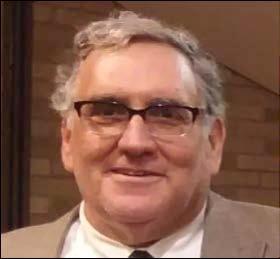
David was preceded in death by his parents. He is survived by his loving wife Ruth Anne Van Loon; his devoted sons, Nathan Nash and daughter-in-law Andrea Evans of Chicago, and Samuel Nash of Cincinnati; his cherished sister Vivian Nash and brother-in-law Jeffrey Sklar of Brookline, MA; his adored nephew Aaron Sklar and niece Shana Sklar and their families; and cousins and in-laws who greatly loved him. All will miss his curiosity, his unique sense of humor, and the way his presence could fill up a room.
A memorial service will be held on Saturday, March 18 at 1:00 pm at Mt. Auburn Presbyterian Church, 103 William Howard Taft Rd, Cincinnati, OH 45219. Memorial contributions may be made to the University of Cincinnati for the David B. Nash Memorial Fund to support the mission of the Theis Environmental Monitoring and Modeling Site, Geosciences Department ML#0013, 345 Clifton Ct., University of Cincinnati, Cincinnati, OH 45221.

We are currently in the process of renaming the Theis Environmental Monitoring and Modeling Site (TEMMS) to the Theis-Nash Environmental Monitoring and Modeling Site (TEMMS) in recognition of David Nash’s significant contributions. Over the course of a decade, David played a pivotal role in constructing the site, utilizing his expertise, technical skills, and persistence. Furthermore, the UC Foundation has established the David B. Nash Memorial Fund, which is designated to support the TEMMS. If you would like to contribute, please visit the following link: https://foundation.uc.edu/NashMemorial
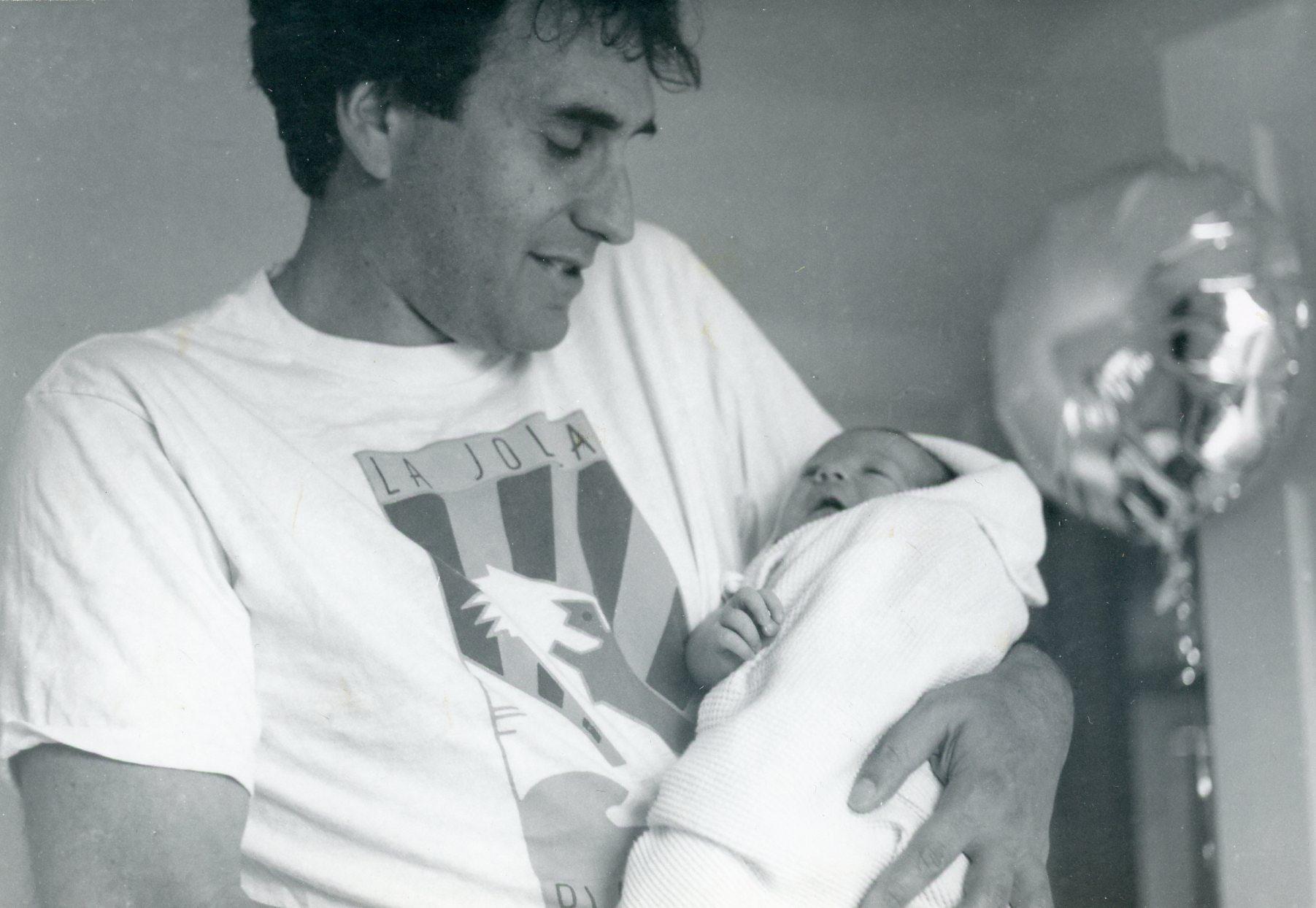
Over the 40 years since we met when I was a new graduate student at Cincinnati and he was a recently tenured associate professor, David was a teacher, colleague, and friend. He was an engaging conversationalist with a wry sense of humor who made important contributions to geomorphology and played a key role in my own development as a quantitative geologist. Everyone who knew David will miss him.
Dave taught me geomorph in 2007, I TA’d geomorph for him in 2010-2011, he introduced me to Mammoth Caves, and was always a source of positive energy anytime he was around.

Reza Soltanian: Remembering David Nash, UC Geosciences Dept emeritus professor and the mastermind behind Theis Groundwater Observatory, now known as Theis Environmental Monitoring and Modeling Site (TEMMS). We’re grateful for his contributions and will miss him greatly. Rest in peace, David.

A huge loss and I’m glad I have these memories to reflect on.
He truly loved teaching students and it showed. His sense of humor and fun made learning a joy. He will be missed.
He truly loved teaching students and it showed. His sense of humor and fun made learning a joy. He will be missed.
I’m sorry to hear of Dr. Nash’s passing. As an undergraduate and grad student back in the 70’s, I remember when he joined the Geology faculty,…a natural mentor from the beginning. He had a focused and inquisitive view of geosystems, but it was his sense of humor that helped students be realistic with their research, and real with themselves.
Condolences to David’s family and the U.C. Geology family on the loss of a fine geoscientist and a better person. Dave came to campus well after I left, but I was fortunate enough to get to know him and enjoy all that he was on many visits to the Department over the years. Delightful sense of humor...I would guess that it was a particular joy to take a class from him. Proof again that we are enriched by those with whom we get to cross a path during our journey.
Dr. Nash was charismatic and always enthusiastic about the geosciences. I had the opportunity to have him as a professor. Certainly a sad day for the UC community, rest in peace professor David.
A sad day. Dr. Nash was a great person. Rest easy my friend.
He was a truly beloved and respected colleague. He had a powerful intellect -- often disguised with self-deprecating humor -- and a wide range of interests both in and out of geology, and had insightful observations about people, places, institutions, and life. In geology and geomorphology and hydrology, David was as smart and savvy as they come. He was also forward-looking and understood the essence of the thing. We all miss him now in the moment and will continue to miss him deeply as we remember his good cheer, his laugh, and his companionship as a fellow geologist and as a friend.
I heard news of Dr. Nash passing away recently. Sad news to several of us from class of 1981 who were among his inaugural geomorphology classes a few years prior to that date. Attached are a couple of low-resolution photos of Dr. Nash and others wading in a Little Miami River tributary stream in the 1978-79 timeframe as part of a stream gauging exercise.
David was a joy to work with and always positive. So sorry to hear of his passing.
Nash was one of my favorites at UC! So sorry to hear of his passing.

I have interacted in many occasions with David and I always remember his positive energy and creativity. I am so sorry to hear of his passing. But his legacy will leave on.
I heard news of Dr. Nash passing away recently. Sad news to several of us from the Class of 1981 who were among his inaugural geomorphology classes a few years prior to that date. Here is Dr. Nash and others wading in a Little Miami River tributary stream in the 1978-79 timeframe as part of a stream gauging exercise.
One of the first geology classes I ever attended was Groundwater Hydrology with Dr. Nash. I proceeded to take pretty much every other course he taught as I finished the geology program at UC. He had a big impact on my education and I have many fond memories from his field trips.
Such a wonderful teacher and person. He encouraged me so much, and I loved all of his courses. Nothing like a little extra credit for quoting the big Lebowski in a test answer. He will be missed.

meaning faults or “Folts” when meaning folds. Besides the outcrops and geologic arm waving to depict the overthrusts, one highlight of the trip was our 2nd night when Dr. DeJong had us all out to dinner in some small town, complete with an arcade of games and such where he kept us occupied until after 10:00 pm. The real purpose was that if he waited late enough the manager of the nearby campground would be gone and we could stay for free, provided we departed by 07:00. That cost savings plan was thwarted the following morning when Mark Mersmann (pictured right of Dr. DeJong) drove one of the Geology Dept. vans into a ditch at the campground exit requiring a tow truck and of course extended our stay until the campground manager could observe and inquire about our doings when he arrived.
Here are a few photos of a couple of fieldtrips with Drs. Nash & DeJong.
The Mammoth Cave trip photo includes from Left-Right: James Barron, Kris Hemlein, ??, Dr. Nash, Neal Koch, ??, and Pat Galvin. The gravesite defiler is unknown but likely Harry Bolton.

The extended weekend trip included excursions both inside the cave and the surrounding countryside while exploring the karst area.
The other fall trip that year was Dr. DeJong’s structural geology one to KY and TN in search of overthrusts and ophiolites. My 4 years of Spanish did not prepare me for translating Dr. DeJong’s descriptions of “Folts” when


Mr. Jason Adler
Ms. Mary F. Bishop
Ms. Lisa Bohl
Ms. Margaret Byer
Ms. Susan Carlson
Mr. and Mrs. Paul J. Cosgrove
Mr. Gregory Cui
Ms. Susan M. Dunlap and Mr. Jesse Simmons
Federal Trade Commission
Dr. and Mrs. Douglas J. Ford
Ms. Rachel Granetz and Lee Farnsworth
Dr. and Mrs. John E. Grover
Mr. Tim Hochhausler
Dr. and Mrs. Warren D. Huff
Ms. Susan M. Ingmire
Mr. and Mrs. Brad Kimball
Ms. Elizabeth Kurman
Mr. Peter J. McKinney
Dr. Arnold I. Miller and Ms. Mary
J. Montenegro-Miller
Mr. Nathan Nash
Ms. Vivian Nash
Dr. and Mrs. Alan E. Oestreich
Mr. and Mrs. William Placke
Ms. Eleanor R. Poole
Salvatore Prescott Porter & Por -
ter, PLLC
Dr. Ruth Anne Van Loon

Hello friends! My lab continues its focus on searching for evidence of life on the ancient Earth and ancient Mars. This past year included a lot of laboratory work and fieldwork.


We continued to focus on Mars this year. I continued as a science team member of the NASA Mars 2020 mission (Perseverance rover) and students Andrea Corpolongo (Ph.D. Candidate) and Brianna Orrill (Ph.D. student) are also members as student collaborators. The mission is searching for evidence of ancient (fossil) life in the paleolake deposits of the 3.8-billion-year-old Jezero crater and collecting samples for return to Earth on a future Mars Sample Return mission. If Mars ever hosted life, it’s most likely to have been microbial, and my role, as a microbial paleontologist, is to advise on what samples to collect that might hold evidence of ancient life. If it’s there, we should be able to find some evidence, but we will almost certainly need higher magnification and more sensitive instruments to really be sure, so that’s why we want to bring the samples back.
Andrea published her first paper as lead author (congratulations!) in the Journal of Geophysical Research –Planets based on data from the SHERLOC instrument on the rover (a deep UV Raman spectrometer). This paper cataloged and gave initial interpretations of the minerals detected by SHERLOC during the first year on Mars. Andrea and I contributed to several other Mars 2020 papers that came out in the last year or are coming out soon.
The second year of the Mars 2020 mission has been a great success! We moved on from the crater floor to study the sedimentary rocks of the delta that was deposited in Jezero crater (see photos), which is one of the main reasons this location was chosen for this mission. Finegrained mudstones continue to be elusive, but as sedimentary geologists know, these rocks tend to be fragile and can be harder to find good outcrop exposures. But we have collected a great set of sedimentary rocks that could contain biosignatures (we’ll have to wait for them to come back in 2033, only ten years from now!). We continue to explore the delta and will then move on to studying carbonate-rich units near the margin of the crater before (hopefully) driving out onto the surrounding plains to explore even older terranes.
On the topic of marginal lake carbonates, Andrea was successful in acquiring funding from the American Philosophical Society Lewis and Clark Fund for Field Research in Astrobiology. We used this funding in June 2022 to explore the Eocene Green River Formation in Colorado and Wyoming and collected samples of microbial carbonates (stromatolites) that may be analogues for the types of carbonates we will soon explore on Mars. (To be fair, the Mars carbonates may also have formed from the alteration of olivine-rich igneous rocks—we won’t know until we start exploring soon!). Andrea has recently begun work on these samples to understand their potential to preserve biosignatures.
Andrea and I continued work on our NSF-funded project studying the paleontology and paleoecology of 2.5-billion-year-old fossil microbes and microbialites from the Kaapvaal Craton of South Africa. In July 2022 we traveled to South Africa to continue her fieldwork and collected some amazing specimens. Camden Goland (M.S. student) is continuing work on a project to study thermal alteration of fossil organic matter from some of the same geologic units that in South Africa. Undergrads Jove Kohl (B.S. 2022) and Abby George did excellent work on this project as well. They both worked on producing 3-D images of fossil microbialites. Jove and Camden presented their work at the North-Central/Southeastern GSA conference held in Cincinnati in Spring 2022 and Abby presented at the UC Undergraduate showcase in 2023. Jove also studied the major element and carbon isotope compositions of microbialite cherts and presented that work at the national GSA meeting in Denver in October 2022. Excellent work all!
We also continued work on my NASA Exobiologyfunded project looking for evidence of oxygen production by microorganisms in 3.2-billion-year-old deltaic sediments from the Moodies Group of South Africa. In Summer 2022, Andrea and I collected samples of these units, along with other colleagues working on this project. Unfortunately, Desirée Baker, who started

working on this project with me in Fall 2021 had to leave our program for health reasons last summer. We were very sad to see her go, but she is doing better now. Brianna Orrill picked up the project and is making great progress. This September, Brianna and I will travel to Germany to sample drill core from the Moodies group to begin our geochemical analyses in earnest. This project has major implications for how we might search for similar evidence in the returned deltaic samples from Jezero crater on Mars!
I am looking forward to welcoming a new student in the Fall. Sam Hall received his B.S from Beloit College and will likely work on a project relating Mars and the Early Earth.
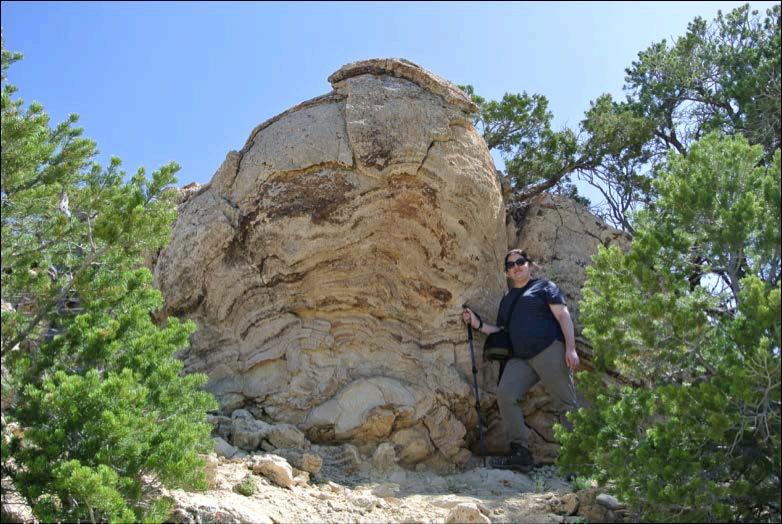

My former students have been busy and successful as well. Andrew Gangidine (Ph.D. 2020) is now a Science Writer in the Yale University Office of Development. Jeff Osterhout (M.S. 2016), after earning a Ph.D. at the UCLA in 2021, is continuing his postdoc at the Jet Propulsion Laboratory in Pasadena, CA working on aspects of Mars Sample Return and is now also a member of the Mars 2020 mission Science team.
For more goings-on in my lab, please check out my website at http://andyczaja.com.

July 11, 2022
The first year of the Perseverance rover mission on Mars captured the imaginations of scientists and the public alike with an interplanetary helicopter flight and the first chance to hear the sounds of the red planet.
But two students at the University of Cincinnati say the best is yet to come in year two as the rover and their Perseverance science team begin in earnest to look for ancient life on another planet.
UC College of Arts and Sciences geology students Desirée Baker and Andrea Corpolongo are working on the NASA science team, using the rover and its helicopter sidekick, Ingenuity, to explore Jezero Crater near an ancient river delta that might hold clues of the first known extraterrestrial life.
UC associate professor Andy Czaja served on the NASA advisory board that picked where to send the rover for the best chance to find evidence of ancient life. Now he and his two students are members of the mission science team helping NASA explore the red planet to answer fundamental questions about the origins of life in the universe.
One fundamental task of the mission: collect rock samples on the Martian surface to bring back to Earth during a future mission.
Czaja, who studies Precambrian paleobiology, astrobiology and biogeochemistry, is one of 16 scientists around the world named in June to a new NASA science group that will plan how the global scientific community will share and study those samples. The team includes experts in geology, geochemistry, planetary physics and epidemiology, among others.
“Mars is at the frontier of science. I’m excited and honored to be part of it,” Czaja said.
Read Full Article Here:
https://www.uc.edu/news/articles/2022/06/uc-geology-students-help-nasa-search-for-evidence-of-ancient-lifeon-mars.html
Just a quick update as we prepare to leave for field work in Maine. It’s been a productive year – lots of diatom biomarker work and lake sampling in the Midwest and Great Plains with Tom Lowell and my students. Meg Corcoran graduated this spring with her PhD. Watts Dietrich defended his MS Thesis in late April. Hans Naake just finished his first year of his MS and is heading to Maine (again) for field work. A fantastic group of undergrads are busy in the labs and many are helping out with fieldwork including Alyse Beekhuizen, Scott Furlong, AJ Kmetz, Michael Schenk, and Annabel Stanley.



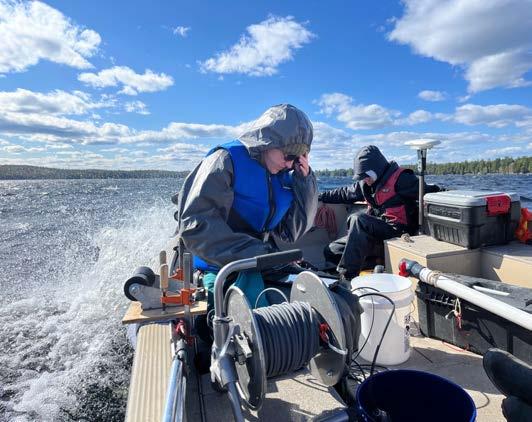


Photo Captions:
Here are some photos from our trip last week to Maine. Students are Alyse

It’s been another full and rewarding year. This was my fifth year serving as graduate director. Several students graduated since last Spring (with many more planned over the next few months), an excellent cohort of new grad students started in the Fall, and we are excited to welcome new students again in August.
My lab has been bustling. I have had a productive research year (publishing a variety of projects ranging from a paleoecological reconstruction of Madagascar’s extinct hippopotamuses to an investigation of space use by male jaguars based on their feces).
Clark Ward defended their MS thesis at the end of April and will be graduating this Summer. They will be moving to Minnesota to pursue a PhD. Emily Simpson is also close to finishing her PhD. Andrew Hensley joined my lab in 2022 as an MS student but decided they like our department so much they switched to the PhD program. Everybody is doing well. Emily published one of her dissertation chapters in January (a methodological study evaluating if it is possible to use nondestructively determine diagenetic alteration of fossils using handheld xray fluorescence), and it has already received quite a bit of attention. Clark is working on finalizing their thesis, which is focused on the ungulate commu -
nity at Ashfall Fossil Beds in Nebraska, and we plan to submit the project for publication later this year. Andrew has processed and analyzed over 200 bones, and we now have roughly 10 times more isotope data for extinct Hispaniolan rodents than were previously available. We’re learning some very interesting things about the foraging niches of the various extinct species. We will have a new MS student, Harley Bailey, joining us in the Fall.
I am also feeling good. 2022 was a rocky one for me health-wise, but I have come out on the other side, and am able to live my life more or less normally again. I was also able to travel a bit more than in the previous two years. We spent another summer at our home in northern Michigan (I did a bunch of tree planting, and painting and staining of porches), and I enjoyed participating in the Society of Vertebrate Paleontology conference in Toronto in November and the American Association of Biological Anthropologists meeting in Reno this Spring. I am very much looking forward to the INQUA congress in Rome (this will be my first trip to Italy), and we will be hosting SVP in Cincinnati in the Fall. I am excited to share Cincinnati with friends and colleagues. Hopefully some of our alums will be joining us too.

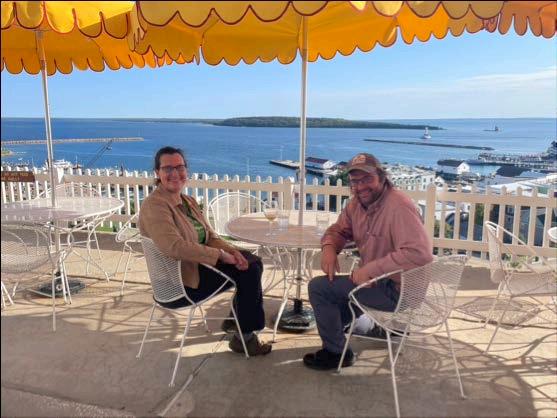

June 13, 2022
Fossil remains usually reveal little about lifetime landscape use beyond place of death, but ever-growing tusks of American mastodons (Mammut americanum) record this fundamental aspect of paleobiology. Using oxygen and strontium isotopes from a serially sampled male mastodon tusk, we reconstruct changing patterns of landscape use during his life. We find clear shifts in landscape use during adolescence and following maturation to adulthood, including increased monthly movements and development of a summer-only range and mating ground. The mastodon died in his inferred summer mating ground, far from landscapes used during other seasons. Mastodons had long gestation times, and late Pleistocene populations lived in harsh, rapidly changing environments. Seasonal landscape use and migration were likely critical for maximizing mastodon reproductive success.
Abstract
Under harsh Pleistocene climates, migration and other forms of seasonally patterned landscape use were likely critical for reproductive success of mastodons (Mammut americanum) and other megafauna. However, little is known about how their geographic ranges and mobility fluctuated seasonally or changed with sexual maturity. We used a spatially explicit movement model that coupled strontium and oxygen isotopes from two serially sampled intervals (5+ adolescent years and 3+ adult years) in a male mastodon tusk to test for changes in landscape use associated with maturation and reproductive phenology. The mastodon’s early adolescent home range was geographically restricted, with no evidence of seasonal preferences. Following inferred separation from the matriarchal herd (starting age 12 y), the adolescent male’s mobility increased as landscape use expanded away from his natal home range (likely central Indiana). As an adult, the mastodon’s monthly movements increased further. Landscape use also became seasonally structured, with some areas, including northeast Indiana, used only during the inferred mastodon mating season (spring/summer). The mastodon died in this area (>150 km from his core, nonsummer range) after sustaining a craniofacial injury consistent with a fatal blow from a competing male’s tusk during a battle over access to mates. Northeast Indiana was likely a preferred mating area for this individual and may have been regionally significant for late Pleistocene mastodons. Similarities between mammutids and elephantids in herd structure, tusk dimorphism, tusk function, and the geographic component of male maturation indicate that these traits were likely inherited from a common ancestor.
Read Full Article Here:
https://www.pnas.org/doi/full/10.1073/pnas.2118329119
June 27, 2022
A mastodon named Fred, also known as the Buesching mastodon, is a distant relative of the modern elephant. Fred’s skeleton is preserved in the Indiana State Museum.
SHAPIRO, HOST: I t can be tough to reconstruct a life in detail after 13,000 years. So allow us to present you something extraordinary - the story of Fred. Fred was born somewhere in the Midwestern United States and likely spent much of his early life at home. When it was finally time to forge a path of his own, he said goodbye to his family and set off into the wild.
SUMMERS, HOST: For the rest of his life, Fred roamed the plains of what is now Indiana. Every summer, he’d compete against other males for a mate. These competitions were violent, physical battles, and one summer, one of these fights brought Fred to an untimely end. Dead at 34 years old, Fred’s body sank into the swampy earth.
SHAPIRO: T hese days, Fred’s skeleton is preserved in the Indiana State Museum. It’s 9 feet tall and 25 feet long. His head alone weighs over 300 pounds.
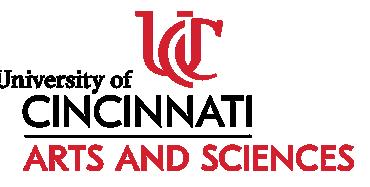
SUMMERS: F red was a mastodon, also known as the Buesching mastodon, named after the family farm where his remains were found. He is a distant relative of the modern elephant.
JOSH MILLER: S o the Buesching mastodon was preserved in a swampy area, and those kind of environments are really conducive to excellent preservation.
Read/Listen to Full Article Here: https://www.npr.org/2022/06/27/1107961608/the-story-of-fred-the-mastodon?fbclid=IwAR33tpaY8FBi0qsDGM26vJ mCUSuJaXmvh7nUxxDajmkXVQRTOjFJidsAsOQ
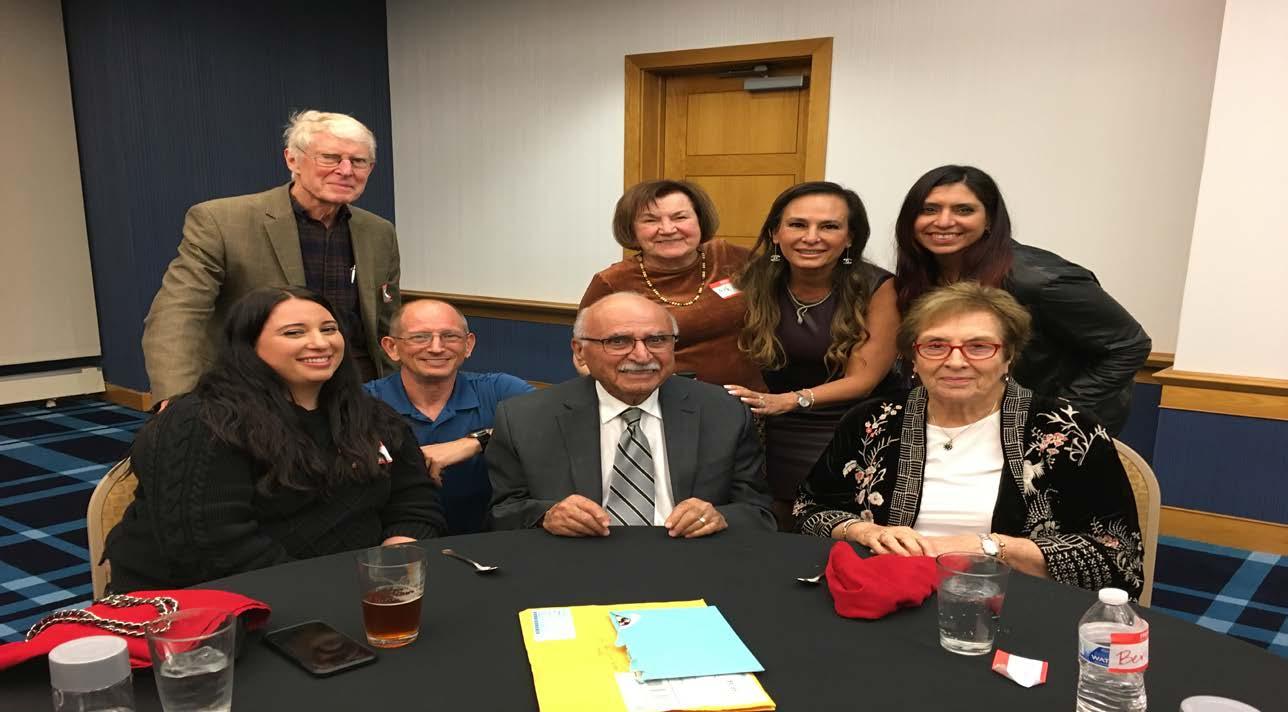
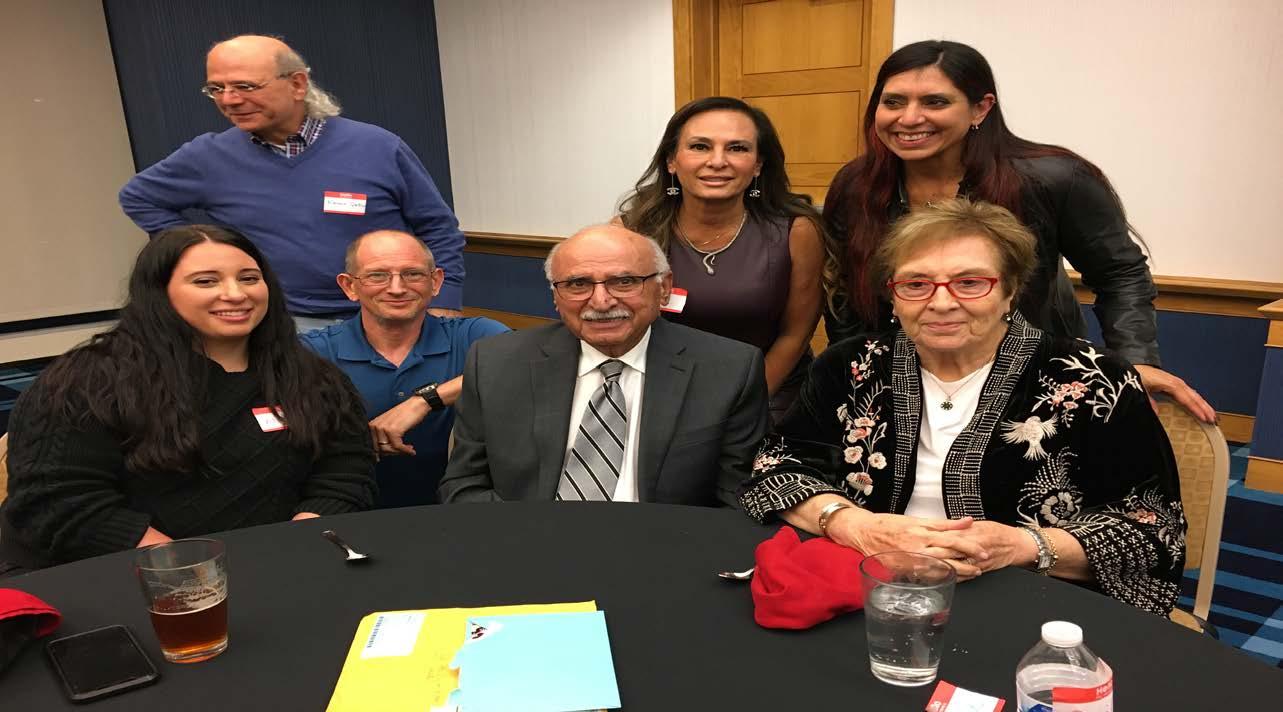
Hi all! Another year has come and gone and I have no idea where the time went. On campus, this year feels much closer to pre-Covid times, which is nice. Our older daughter Ivy is finishing up 1st grade and Eliana (4) is moving to pre-K in the fall. Sarah is now working as a software engineer at 84.51 and continues to teach online courses in the Environmental Studies program UC. Vince Nowaczewski has been making a lot of progress on his dissertation. He received funding from GSA, the Society of Economic Geologists, Nevada Petroleum and Geothermal Society, Geologic Society of Nevada, and most recently AAPG. He spent much of last summer out mapping in the Spruce Mountain Quadrangle south of Wells, though he was sidelined by a flash flood that resulted in a truck stuck behind destroyed roads for more than a month. Luckily, he was safe and I was able to get him out the morning after the flood. The goal of the mapping will be to better understand formation of the Middle Pennsylvanian Hogan Basin, strata of which is exposed in several mountain ranges in east-central Nevada. This summer he will complete the mapping (as part of an EDMAP grant), and also collect samples for the AAPG grant and measure a few sections for the regional analysis of the Hogan Basin. He also continues to work on geomechanical modeling to explain the distribution of structures within the Ancestral Rocky Mountains orogen. Vince will be presenting at the Cordilleran and Rocky Mountain GSA section meetings, and the first of his modeling papers will be submitted for publication this summer.
Elizabeth Shade joined my group this year as well (coadvised by Craig). Liz is a gemologist, and she is working on understanding the occurrence and distribution of yellow fluorescence in colorless diamonds. Look for more results soon!



I also had several undergraduate students who worked with me and even presented research at national GSA and GSA section meetings. I was able to take four students (Zoey Molsberry, Arianna Craycraft, Emma Phipps, and Thomas Marsh) to do some reconnaissance fieldwork on a landslide near Spruce Mountain, Nevada last August. Zoey presented research that she completed over the summer on landslide statistics at the GSA national meeting in Denver. Mason Doyle also presented on research he was doing looking at landslide morphology. Azzan Al-Abri just presented our research on CHIRP lines at Ambajejus lake that was analyzed as part of the Applied Geophysics class last fall. Ella Buckner has been assisting with ReMi analysis of passive-source seismic data that we collected

in western Nevada in 2021. This summer, Paul Smith, an astrophysics major, is working with me on his capstone project which will involve collecting and analyzing gravity data near Reno, NV this summer.

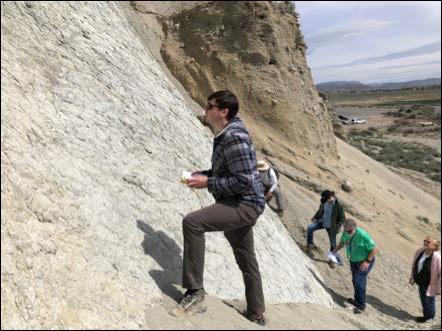

This summer is already filling up. I will be at the GSA North-Central meeting in Grand Rapids, MI and the GSA Cordilleran section meeting in Reno, NV, both in May. In August, I will lead our department field trip to northern California. In between those, there will be travel (Colorado, Europe), field work (MASW surveys in Cincinnati, Gravity surveys near Reno, mapping with Vince in northeastern Nevada), and a lot of manuscript and grant proposal writing. In early fall I will travel back out to Reno to complete passive-source seismic surveys in the TahoeReno Industrial Complex and Stead-North Valleys as part of a NEHRP grant with John Louie from the Nevada Seismological Lab.
It was a busy publication year with 6 papers released in the last year. The most recent is a critical re-interpretation of the middle Paleozoic Antler orogeny in Nevada (Cashman and Sturmer, 2023), which just came out in Geology. Our interpretation is that the Antler event actually reflects a left-lateral transpressional margin, with deformation occurring during the middle Mississippian (rather than the oft-cited latest Devonian-earliest Mississippian). My former M.S. student Nick Ferry published his M.S. thesis work on the Blue Diamond landslide in Journal of Sedimentary Research (Ferry et al., 2022). I also co-authored papers with graduate students in our department, including papers focused on a using portable XRF to test for sample alteration (Simpson et al., 2023, Frontiers in Environmental Archaeology), and underground Hydrogen storage (Ershadnia et al., 2023, International Journal of Hydrogen Energy). I was the lead author on 4 meeting abstracts, had 9 student adviseeled abstracts, co-authored 2 other abstracts. Finally, last May I led a department field trip to northern Nevada.
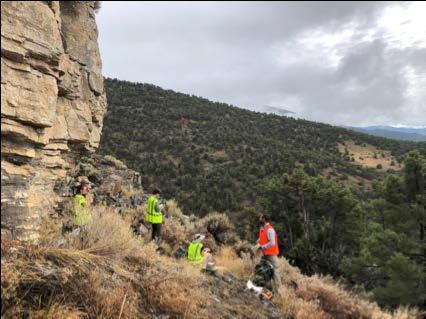
This has been a busy teaching year as well. Last fall, I taught Applied Geophysics, Regional Tectonics (with Craig), and Careers in the Geosciences. This spring I also taught three courses, including Structural Geology, Earth Surface Processes, and a 7-week Natural Hazards course for UC Online. Craig and I were able to revive a joint structure-tectonics weekend field trip to Asheville, NC. Next fall I will have a bit of a break, with only the Careers in the Geosciences (undergrad and grad) course. This spring I also revived the Career Days as Career lunch and learn. We had speakers in a variety of jobs talk about the work that they do every other week (with lunch provided!). If you are interested in participating in a future Career lunch and learn, please let me know!
There is more, but that is enough for now. Catch you next year!
Dan SturmerOctober 2022
He started his career, famously, as a geology student who was not at the top of his class, yet he eventually took his place among the most honored geologists of his era.
He was a professor, author, world-traveler, statistics whiz and an aviation aficionado, too, yet what he loved most was being in the field, with the rocks, discovering again and again the beauty and brilliance of geology.
Paul Potter
And what he learned, he enthusiastically shared with others. Because what he valued most, a core of his moral compass, was giving back to help others.
And now that legacy is about to continue.
A new named grant has been established by the AAPG Foundation in the honor of legendary, award-winning geologist Paul Potter, thanks to the generosity of his family and of the AAPG Eastern Section.
The Eastern Section Paul E. Potter Memorial Field Geology Grant was recently approved by the Foundation, thanks to a $50,000 donation that the Eastern Section leadership hopes will grow in coming years. Income from the Fund will be used to support research expenses for a student studying within the AAPG Eastern Section, whose work has a strong field geology component.
“The Paul Potter Estate made the bequest directly to the Eastern Section to do with as we see fit, no strings attached,” said Donna Willette, the current ES president. “There was a clear, immediate consensus with the ESAAPG board … to use the money to deliver a Student GIA in Paul Potter’s memory.
“We decided the focus for the grant should be on a field geology grant,” she continued. “He was all about the rocks and getting out to see the rocks, (and) currently, expenses for field geology work are quite high, not to mention that typically students aren’t paid while out in the field. Field work is becoming a critical expense – and we need field work.”
The Paul E. Potter Memorial GIA will be available for the 2023 AAPG Foundation’s Grants-in-Aid season.
The Foundation’s GIA program provides financial assistance to graduate students whose thesis research has application to the search for and development of petroleum and energy-mineral resources, and/or to related environmental geology issues.
The annual grants are intended to cover only work directly related to student’s thesis work, especially field work.
And that’s something that would have made Paul very happy.
His Brilliant Career
Paul E. Potter, who in 2016 was the recipient of the Sidney Powers Memorial Medal, AAPG’s highest honor for science, died July 4, 2020, at the age of 94.
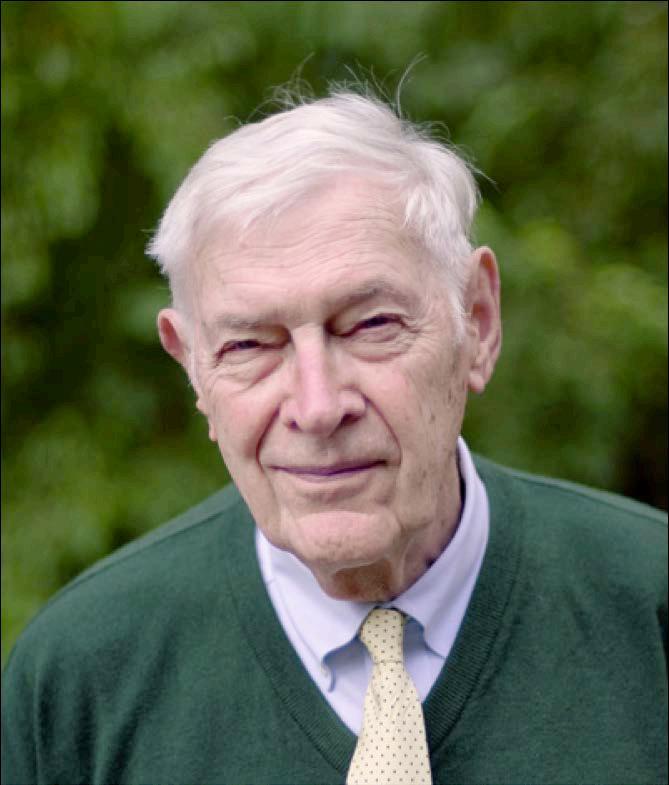
A native of Springfield, Ohio – despite his work around the world, the U.S. Midwest would be a constant throughout his life – Potter served in the U.S. Army in the Philippines during World War II, before getting degrees in geology from the University of Chicago (MS and PhD) and then in statistics from the University of Illinois (MS). He often spoke of being something less than a straightA student, even when it came to geology. But his curious nature and focused eye on details helped carry him to the heights of his profession.
He began his career with the Illinois State Geological Survey and began consulting in the 1950s – including for Shell, Schlumberger, Total and Petrobras.
He became an associate professor of geology at Indiana University in 1963, then received a Guggenheim Fellowship, which took him to Johns Hopkins University, where he worked with Francis Pettijohn. Together, they produced the seminal books, “Paleocurrents and Basin Analysis” and “Atlas and Glossary of Sedimentary Structures.”
In 1972, the two then-noted geologists were joined by Raymond Siever to produce another significant book, “Sand and Sandstone.” Potter joined the faculty at the University of Cincinnati in 1971 – during his time there he also established himself as not just a teacher but a leader in publicizing the importance of the local geology and its role in understanding hazards such as landslides. He retired there in 1992 as professor emeritus of geology.
But those touchstones tell only part of his story – and can’t begin to define his decades-long influence as a geologist, professor and mentor. As noted in the AAPG EXPLORER when he received the Powers Medal, he:
Authored or co-authored “a seemingly constant stream of papers and seven influential books.”
Did field work “just about everywhere,” with a focus on 16 of the United States, Saskatchewan, Ontario, the Bahamas, Mexico, Spain, France, Italy, Algeria, Argentina, Brazil, Guyana, Venezuela, Colombia, Chile and Peru. (“After about 10 years, I get bored with what I’m doing,” he told the EXPLORER.)
•Taught in Mexico and Indonesia in his “retirement” years, returning to Cincinnati during the summers to teach and advise students there as well.
• Amazingly, served as an assistant professor of geosciences at Brazilian universities in the 1990s – amazing, because of the personal challenge it entailed.
“I went when I was 67,” he recalled, “because if I’d had to put down my age as 70, I thought, ‘No one would give a job to a 70-year-old man.”
Still, on his way to Brazil he thought, “Should I be doing this?”
“And I said to myself, ‘Paul Potter, if you don’t have the guts to do this, you aren’t going to do anything,’” he said.
Not only did Potter have a career filled with activity, he also had one filled with excellence. In addition to AAPG’s prestigious Powers award, he received the SEPM Pettijohn Award for Excellence in Sedimentology, the Mather Medal for contributions to Ohio geology studies, the AAPG Eastern Section’s Outstanding Educator Award, the Eastern Section’s John T. Galey Memorial Award and the AAPG Jules Braunstein Award.
His final publication with the Ohio Geological Survey was a map of the Little Miami River Watershed, published just a few months before his passing.
AAPG Explorer October 2022.
I am delighted that we seem to be somewhat out from under the worst of pandemic. It is a delight being back teaching and working with students in a regular, face to face way: I grew very tired of doing virtual and hybrid teaching and I do not think most students did very well with it. And after a couple of years of rather poor health I am feeling increasingly well and glad to be busier than ever, in many ways.
the Nashville area in comparison to the classic Cincinnati region. Another new student Martin Welych Flanagan from the Syracuse area, will be joining us this fall.
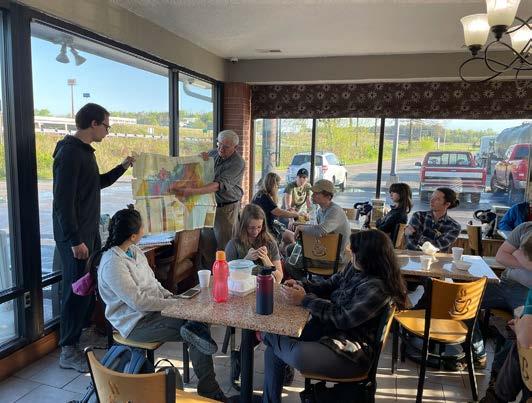

I have known Martin since he was just 10 as he came out almost every year to attend field trips run by my colleague Gordon Baird and myself for the Paleontological Research Institution’s summer symposium. It has been great to see Martin maturing as a scientist. One thing that shaped the early fall of 2022 was the Geological Society of America annual meeting back full inperson and in Denver, Colorado-which had been their norm every three years until 2019 when their convention center was under reconstruction. I was invited to give a talk for the special session on the 50th Anniversary of a most famous paper by Niles Eldredge and Stephen Jay Gould, in which they introduced the concept of punctuated equilibrium (alias “punk eek”) in 1972: the concept that much evolutionary changes happen relatively abruptly during species splitting events, followed by much longer periods-millions of years- of no change or stasis. It turned out to have a tremendous impact on the discipline I remember reading this paper as an undergrad student and I found it very exciting. In any case, I presented a review and updating of my
I am very encouraged by our current students, both graduate and undergraduate. I am presently working with four graduate students. Allison Young is really making good progress despite her busy job that she loves and is doing so well in that she is now setting up internships for our undergrad. students) and will finish her PhD in the next months. Sam Little is working hard to complete his MS on time and has done an exciting research project, funded in part by our amateur colleagues, on the Ordovician Richmondian Invasion with some surprising results; he plans to defend his thesis in June. Cole Farnam continues to work for the SEM lab in Engineering and is hoping to finish a dissertation this fall, on the Latest Ordovician of the Cincinnati area (which was previously unknown) and the recovery from the great Hirnantian extinction by the; we made some important new strides in discovering a remarkable new section, including a previously unknown and fossiliferous outcrop of Ordovician-Silurian boundary locality this year). My new PhD student, Ian Forsythe is a go-getter, who is doing tremendous things regarding Ordovician invasions, extinctions and paleoecology. We hope to submit a joint NSF proposal with his former advisor Dr. Alycia Stigall (now head of department at U Tenn. Knoxville) to make a comparative study of patterns of fossil distribution in
own views on a concept that Gordon Baird and I named “coordinated stasis” in the 1990s, and its relationship to punctuated equilibria. It went well and Niles Eldredge, himself, gave a shout out to our work, recalling that he had met with me in a Burger King in Hamilton, NY, where I told him of my interest in his work on punctuation and stasis in the eyes of trilobites, but suggested that he consider that this did not just operate one lin -
eage at time. Rather, I surmised from looking at the fossil record of New York Paleozoic, that “whole communities of species are evolutionarily static over the same long intervals of geologic time.” He said that idea and a similar proposal by his colleague Elizabeth Vrba was a game changer and had been part of his developing hierarchical view of evolution.
The same day as the “Punk Eek” symposium, indeed just the hour before my talk, I was involved in a new proposal for addition of a conceptual framework for Chemostratigraphy to the North American Code of Stratigraphic Nomenclature. This had been contentious for some time, but I suggested a slight compromise and then somehow brought the subject to a vote and it was overwhelmingly supported (Whew!) That evening, at the reunion of PRI, Warren Allmon announced that the institution would have the new Baird and Brett (B&B) wing of the institution, dedicated to house our archival collections of fossils collected over the well underway in time for the Devonian Subcommission meeting in August, 2023. This all was rather affirming; some days go better than expected.
After the GSA meeting, I ran a very fun field trip with some 20 students in the Rockies Front Range as I had done many years earlier. As in the past, some students made the long drive out to Denver to join others were already at the meeting. We started in the Denver area and examined the Front Range, Red Rocks, and Dinosaur Ridge the first day even as the meeting was winding down. We then drove south to Colorado Springs and studied Garden of the Gods, Royal Gorge and the famed Skyline Drive and Cañon City later in the day. On the
third day we visited the famed Cretaceous of the Pueblo area, Teepee Buttes and Paint Mines. Beautiful weather and very cooperative students made it a real pleasure and one of our students, Paul Smith a professional writer who has returned to school, even treated our whole group to a dinner at a Melting Pots Restaurant at the end of the trip all the more memorable.
And on Saturday October 15, when most students had headed home, my two grad students Cole Farnam and Ian Forsythe, and I visited Florissant Fossil site-a spectacular place noted for Eocene fossil insects and fossil redwoods and took a trip down the remarkable Shelf Road south of the famed mining town of Cripple Creek. Afternoon studying the fames Ordovician Harding Sandstone-even finding nice fossil boney scutes, from some of the world’s oldest armored fishes. Under the brilliant autumn blue skies and brilliant yellow cottonwoods, I breathed deeply (maybe the altitude) and was deeply thankful just to be alive
The fall wound down with more successful trips; I ran the three-day trip to Niagara Gorge-Lake Erie region with about 40 students, over Veteran’s Day weekend Despite some rain it was warmish, students were very patient, reasonable and plugged in, which made it fun. The
next day I was delighted to get back out to Lake Erie and to be able once again to access the shoreline at the remarkable cliffs south of Eighteenmile Creek-via the 140 step steep stairway that students long ago dubbed the “stairs of death”. For some years since 2018 it had been off limits but my dear friend Richard Hermann (who had


taken geology courses at Buffalo from the same professor who had later been my undergrad advisor and so felt a kinship) said OK, just take a few at a time down. It was wonderful to be back and I was happy when all students made it back up the steep stairs.
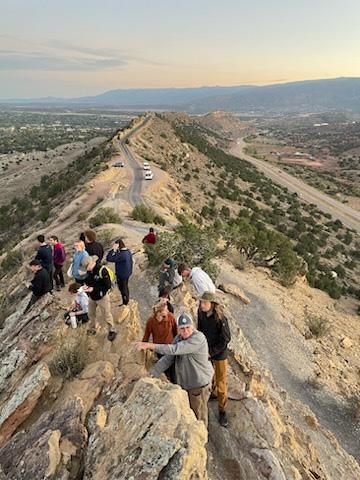
I finished out the trip with a drive back to good old PRI (my friend and former student, Stephen Mayer, who now works on our collections there, had joined our Lake Erie trip, had brought me a key so I could stay at the apartment). I spent a very productive day going over progress on our NSF funded collections project which will culminate next summer-with any luck and hard work- in the opening of the new B&B collection wing.
As I drove back to Cincinnati from a productive and memorable trip I again thought, these are good days to be alive. There was just a spitting of snow and I was
happy to get back in without any problem at the reasonable time of 1:30 AM. Two days later Buffalo was buried under up to 8 feet of snow and all of western New York was under a snow emergency. Nice to have gotten in and out successfully and to be back in warm and snow free Cincinnati; it was warm enough to get out on a very interesting trip to Liberty, Indiana on Thanksgiving eve.
This spring term has zoomed by a breakneck speed. Once again, we were able to run longer field trips including a very successful two-day trip in the southern KentuckyCumberland Gap, Clinch Mountain area of Tennessee.


In 2023, we are in full swing in the “Year of the Devonian” as a result of a major field conference for the International Subcommission on Devonian Stratigraphy in western New York. In the summer months ahead committed to completing a three volume publication on the Devonian of New York, getting four decades of fossil collections made while I was in New York curated and labeled for a new wing of a building at Paleontological Research Institution near Ithaca. Then too I have to help run a 10-day
field conference across New York State during which the Baird and Brett wing of PRI will be dedicated. In addition, here in Cincinnati it is the “year of the Ordovician” with the Cincinnati museum opening a new hall of Paleozoic fossils; my students and I are trying to produce a book on new studies of Ordovician stratigraphy, to compliment that opening. So, I have plenty to keep me busy and I am loving it.
The year 2022-2023 has been another fruitful year for me and my group at UC. We have continued our research efforts, expanded our collaborations, and secured new funding while also contributing to important environmental and educational initiatives.

The saddest news in 2022-2023 for me was the passing of our colleague David Nash, who created the Theis Environmental Monitoring and Modeling Site (TEMMS) through his dedication over a 10-year period. All our success at TEMMS is because of him, and we’re grateful for his contributions and will miss him greatly. Rest in peace, David. We have requested that UC change the name of the Theis Environmental Monitoring and Modeling Site (TEMMS) to the Theis-Nash Environmental Monitoring and Modeling Site, maintaining the same acronym (TEMMS), in order to honor David’s contributions and efforts at UC.
The happiest moment in 2022-2023 was the birth of my third son, Arya Daniel Soltanian, on September 29. He sure is keeping me busier these days! As my family grows, I am reminded of the importance of our work in securing a sustainable future for generations to come.
As an example, my collaboration with Prof. Annette Rowe from UC Biological Sciences has resulted in a successful proposal submission to the Environmental Chemistry

Program of the US Army’s Research Office. The project, “Monitoring and predicting subsurface biogeochemical hot spots” has been funded for $486K over three years. Our interdisciplinary team will be focusing on developing innovative monitoring techniques and predictive models to better understand the complex interactions in subsurface biogeochemical systems. We will also be working with the WHONDRS team from the Department of Energy’s Pacific Northwest National Lab, which will provide invaluable expertise and resources for our research. The project aims to answer key questions, such as correlating redox conditions to biogeochemical reactivity, particularly organic matter molecular chemistry, to image reactivity in space and time, and determining if we can use the underlying lithology and geologic struc -

ture as factors defining the spatial distribution of reaction hot spots.
One of the accomplishments I am most proud of is our groundwater demonstration program at the Cincinnati Museum Center. As part of an NSF-supported project, this program has been a huge success, particularly given
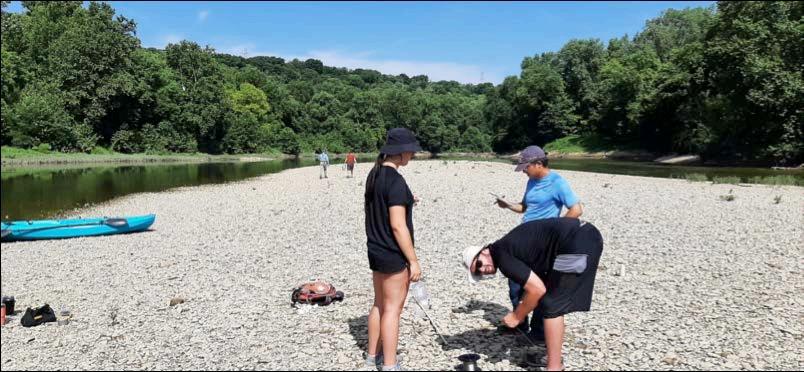

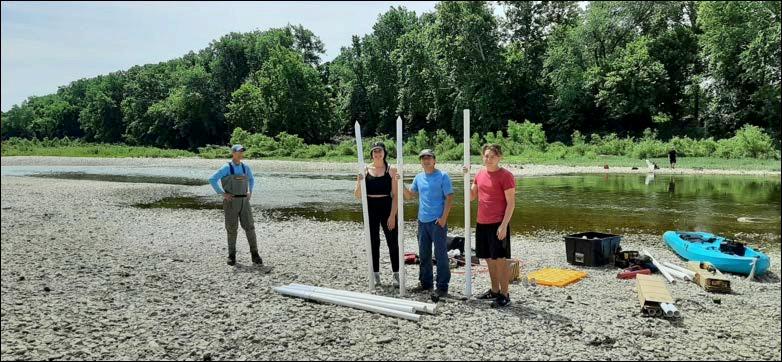

our US EPA colleague, Robert Ford, and appreciate the involvement of other EPA colleagues in the monitoring work at TEMMS.
Postdoc Pei Li has been developing a multiscale geocellular model to better represent heterogeneity in buried-valley aquifers, which will be integrated within
the increased interest in water quality and groundwater following the train derailment in East Palestine, OH. We have been engaging the public and raising awareness on the importance of groundwater resources and the need for sustainable management practices. The groundwater demonstration program at the Cincinnati Museum Center has attracted over 1,000 visitors in just the first three weeks!
fully coupled river and groundwater flow and transport models to better understand biogeochemical dynamics resulting from groundwater and surface water mixing. This work will not only advance our understanding of these complex systems but also contribute to the development of more effective remediation and management strategies.
During the summer, our team carried out extensive fieldwork at TEMMS, which involved installing piezometers, collecting water samples for quality analysis, and monitoring stage fluctuations, among other tasks. Our findings will enhance our understanding of local hydrogeologic systems and help inform sustainable management strategies. We are grateful for the support from
Photo Captions:
In January 2023, we welcomed a new PhD student, Far zad Moeini, to our group. Farzad will be concentrating on applying machine learning and deep learning techniques to tackle complex hydrogeologic problems. His work will enable us to advance the capabilities of hydrogeologic modeling, resulting in more accurate predictions through artificial intelligence-based approaches.
PhD student Tyler McGarr has submitted a review paper on PFAS fate and transport in groundwater and has been working on understanding PFAS sorption in buried val -

In addition, the United Nations University invited me to participate in the UNU-FLORES Resource Nexus Analytics, Informatics, and Data (AID) Programme and help develop a Groundwater Sustainability Module. UNUFLORES Resource Nexus AID Programme Our team is eager to assist government agencies and the private sector
ley aquifer sediments. Tyler and Pei are also working on providing more realistic multiphase flow and transport models for PFAS fate and transport in groundwater. This research is of utmost importance, as PFAS contamination is a growing concern worldwide and requires a thorough understanding of its behavior in the environment to address it effectively.
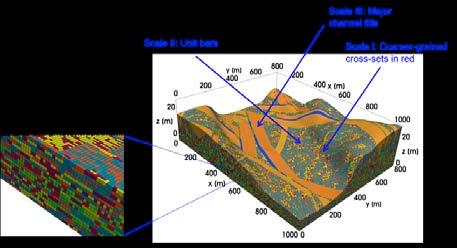
I have initiated the development of the Interpore Northeast-Midwest (NEMW) US Chapter to promote knowledge of porous media systems and facilitate collaboration. The kick-off meeting and steering committee nomina -
in addressing groundwater sustainability issues, particularly in developing countries. We believe that by providing accessible tools, knowledge, and resources, we can empower local communities to tackle their water management challenges effectively. Our focus on developing countries acknowledges the unique challenges they face, including limited resources and infrastructure, and aims to provide tailored solutions that can make a real impact on the ground.
As we look forward to another year, my group remains dedicated to advancing research and making a positive impact on the environment and communities worldwide. We are excited to continue building upon our successes and exploring new avenues of research that will contribute to the sustainable management of water resources and the protection of our planet.
tion are planned for Fall 2023. Interpore NEMW US Chapter This initiative aims to bring together researchers and stakeholders from various fields, fostering synergies and promoting innovative solutions to the challenges associated with porous media systems.
Photo Captions:
Constructing piezometers in summer 2022 at the TEMMS riverbed. Example of multiscale buried-valley aquifer architecture, developed by postdoc Pei Li as part of our NSF-supported project. This project aims to accurately represent complex 3D sedimentary architecture across scales, identify the most relevant scales of topography and heterogeneity for biogeochemical dynamics along river corridors, and understand the spatial and temporal evolution of hot spots.

PhD student Farzad Moeini joined our group in January 2023. Farzad earned his undergraduate degree in Chemical Engineering from Sharif University of Technology in Iran. He was awarded a scholarship from TotalEnergies and subsequently completed a Master’s degree in Reservoir Geosciences and Engineering at IFP School in France.

After too long of a break due to the pandemic, I was finally able to run the Ocean Margins field course once again to San Salvador, Bahamas May 1-17. Gerace Research Centre served as our home base for the trip. I had a large group of students participate this year (16!) and had a nice mix of geology majors, minors, and graduate students.
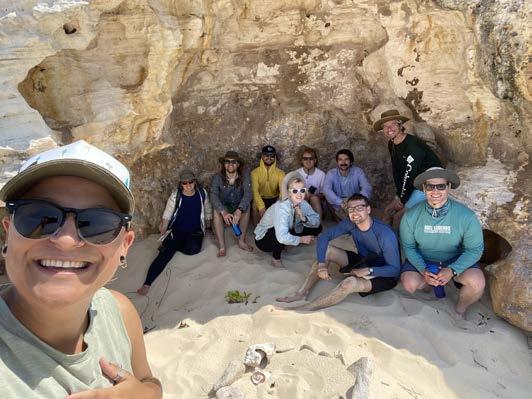
ful. Days were full of visits to outcrops, snorkeling, tide pooling, beach profiling, cave exploring, working on various projects, and learning about carbonate geology and marine ecosystems. The students did a great job throughout the two weeks and I’m very pleased to have been able to share all that I love about San Salvador with each of them.
Upon arrival, the students got to experience the relentlessness of the tiny, but mighty no-see-ums, but quickly rallied and were ready to get out into the field. The group hit all of the usual field sites; Grotto Beach, Watling’s Quarry, Storr’s Lake, Hanna Bay, Lighthouse Cave, The Gulf and Rhizo City, Snapshot Reef, Cockburn Town fossil reef, and Altar Cave, just to name a hand -

A huge “thank you” goes out to my co-leader and adventure pal, Dale Kline, who is currently working on her Masters in marine biology and conservation at the University of Miami and to a great group of students who made the trip a pleasure and a success. I would also like to recognize the late Paul Potter and John Hoholick, whose generous contributions to the Potter-Hoholick

International Group Travel Fund helped subsidize this field course, making it more affordable for participating students.
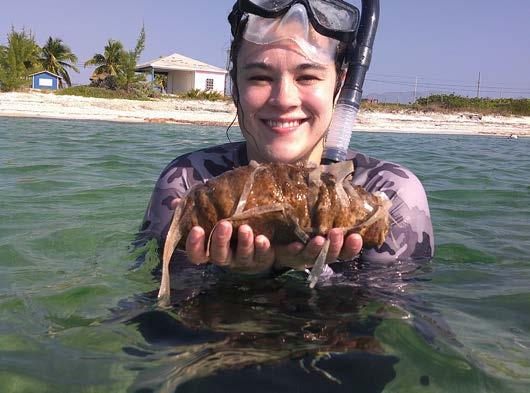

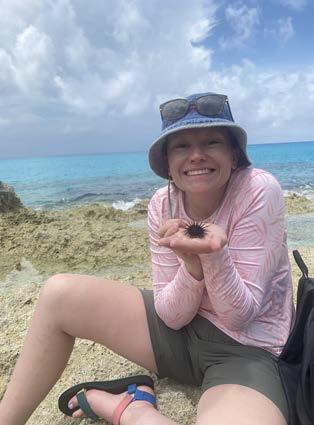
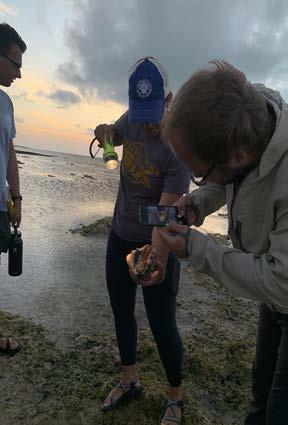
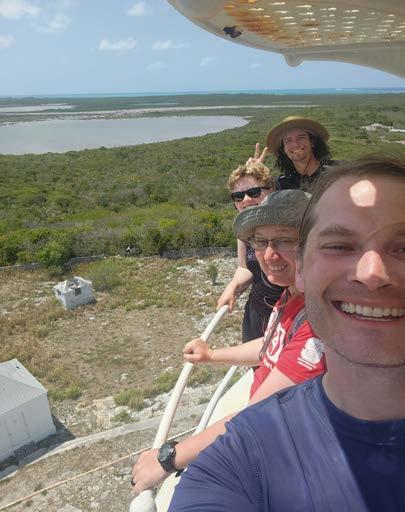
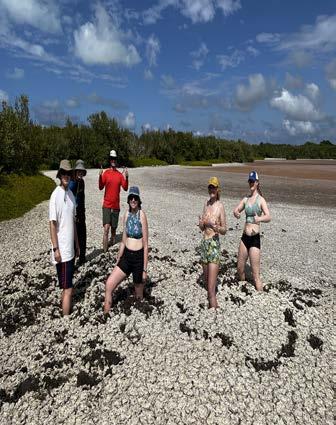
I am already looking forward to running this trip again in 2025, which will mark the seventh time leading the field course.
Student participants: Adam Bernhardt, Mason Doyle, Sophia Eberts, Scott Furlong, Abby George, Olivia Girten, Julie Hobbs, Jayden Kirchner, Sam Little, Sam Niewierowski, Emma Poston, Alex Rasool, Michael Shenk, Tyler Scott, Emily Simpson, and Trenton Smitley.
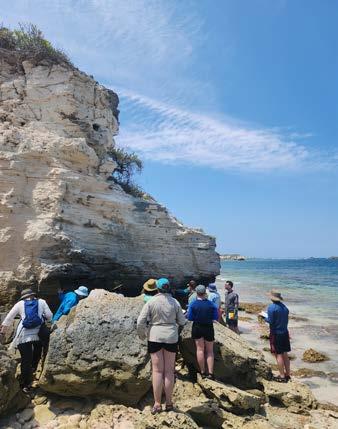

Cincinnati Enquirer|USA TODAY NETWORK
The University of Cincinnati board of trustees unanimously voted to rename all campus spaces connected to its founder Charles McMicken, as recommended by university president Neville Pinto , during a board meeting Tuesday.
The decision to cut ties with the slave owner who fathered children with one, and possibly two, enslaved women was years in the making.
Pinto requested a group of university officials, professors, alumni and student leaders convene in 2019 to assess the university’s affiliation with McMicken. The group found the university’s connection to McMicken, who donated the money and land that build UC in the late 1800s ‘for the education of white Boys and Girls,’ symbolizes ‘the university’s failure to commit fully to the principles of diversity and inclusion that it professes’ and ‘betrays academic values.’
Pinto recommended the removal of McMicken’s name from the College of Arts and Sciences in 2019 , which the board approved unanimously. Now McMicken’s name will be struck from the rest of UC’s campus, including:
McMicken Hall, perhaps the most iconic building on UC’s main campus. McMicken Commons. McMicken Circle. Mick & Mack’s Contemporary Café.
Those spaces are now rebranded as Arts & Sciences Hall, Bearcats Commons, University Circle and Bearcats Café, per Pinto’s recommendation. The board also approved the upgrade of university digital displays ‘to better reflect McMicken’s legacy and the university’s complex historical connection to him.’
‘The prominence of McMicken’s name on campus, and the symbolism of exclusion it represents, is holding us back from creating and sustaining a full sense of belonging for all,’ Pinto said Tuesday, reading his recommendation .
‘We have witnessed tragedy after heart-wrenching tragedy lives lessened or lost due to hate, injustice, inequality and exclusion. As some communities rise together to fight racism, others are being ripped apart by it. We cannot allow division or despair to define our nation, much less our campus community,’ Pinto said.
Isaac Smitherman, UC’s student body president, said that conversations with the campus community have confirmed that Black students still don’t feel comfortable on campus. Tuesday’s decision to remove McMicken’s tie to UC was a step in the right direction, Smitherman said, but it will take additional work and collaboration with university leaders to ensure all students feel welcomed and supported.
‘Getting better is always a journey, and I want to personally thank President Pinto for his vision and guidance in helping us to take this next step,’ board chair Kim Heiman said during Tuesday’s meeting.
A letter in 1962 from a grandmother in Kentland, IN who worked at Hotel Kentland to her grandson. 19 days before, the UC Geology Dept, stayed at Hotel Kentland. I was in Grad School and my future wife was a sophomore majoring in Math and Geology. I met her at the hotel that night. We were the last ones to take showers and we were thrown together as we were both alone and she wanted company for dinner. The best thing that ever happened to me!

Louis Todhunter Mellinger, 83, of Somerset, died February 10, 2023 at The Patriot. Born November 20, 1939 in Pittsburgh, he is the son of the late Frank Millin and Helen (Todhunter) Mellinger. Survived by his wife the former Barbara Eileen Maurer to whom he was married 30 years, and children, Rebecca Kathryn Mellinger and husband Nikos Tzetos of Portland, OR, and Andrew O’Neill Mellinger married to the former Susan Salmon of Pittsburgh, grandchildren: Thalia, Clio, Virginia and Natalie, and sister Christine “Chrissy” LaVielle and husband Craig of Portland, OR, and foster brother Ronald Goens and wife Donna of Cincinnati, OH. Louis was a 1957 graduate of Country Day High School and the University of Cincinnati. He worked until his retirement as a geologist for Commonwealth Contracting. He was a member of Lodge 358 F&AM, GSA, American Institute of Geologists, Yankanuck Club, and Somerset Alliance Church. Friends received 10-11 a.m. Friday February 17, 2023 at the Hauger-Zeigler Funeral Home & Cremation Services, Somerset, where a service was immediately followed at 11 a.m. with Reverend Dr. Scott Ream officiating. Interment at Beam Cemetery. In lieu of flowers contributions may be made to Somerset Alliance Church 708 Stoystown Road Somerset, PA 15501.
I hope all is well with you and yours. Judy and I successfully dodged the Covid bullet. We’re fully vaccinated and boosted, and neither of us has ever felt a need to be tested.
I celebrated my 81st birthday by ordering a new solo canoe, which was delivered a week or so before Christmas and then hung from the ceiling in my garage until ice-out two weeks ago. I can propel it with either a canoe paddle or double-bladed kayak paddle. It’s too short and too wide to be considered a performance hull, but it serves as a great platform for photography and fishing. The bad news is that it’s the devil to get out of. The seat is so low that it’s impossible to get my feet anywhere near below my center of gravity. Accordingly, when I attempt to stand, I just rock backward on the seat. I’m glad nobody was around with a camera or cell-phone to document my strange and awkward antics before I got the hang of it. A friend tells me it’s even harder to exit his inflatable kayak. Lacking any rigidity, the bottom simply deforms when he tries to push himself out. He says he just about has to capsize the thing to get out. The good news is that my canoe weighs only forty pounds, so I can easily lift it overhead and slide it on and off the roof-rack by myself.
We’re going to Albuquerque in mid-April to visit our eldest and his family, and then to Denver in May for our youngest granddaughter’s high school graduation. She’s been accepted at CU-Boulder, CSU, DU, and Lewis and Clark College but hasn’t decided where she wants to go. Unlike her academically lazy grandfather, she has higher than a 4-point grade average and a bunch of advanced placement courses under her belt. I think she’ll opt for either CU or CSU (our son is a CSU grad, but she has a cousin at CU – our daughter’s Alma Mater -- and she loves that campus). Even though the private schools offer generous support, they’re still really expensive.
Attached are some slides from a PowerPoint presentation I’ve been developing* in conjunction with New Dimensions, a series of learning opportunities for folks over 55 years of age. These are from one of four programs I’ve developed on disparate topics. They include: the history of the Cincinnati Observatory, the cultural resources of Colorado National Monument, astroblemes, and this one, on higher magnification photography. New Dimensions operates on a subscription model. Participants pay $75 per semester, which entitles them to attend any number
of programs during the term. My last talk, a month ago at Grand Junction’s central library, drew an audience of eighty people.

*I’ve made the presentation twice but keep fussing with it, and it evolves. How does one know when something is completed?
Schematic: A pane of clear glass, set a 45-degree angle, serves as a beam-splitter. Some of the light from the source is reflected off the bottom of the glass to illuminate the subject. The remainder of the light passes through the glass and is absorbed by the backstop, a rigid block of dark, open-cell foam. In effect, the light striking the subject is on the same axis as the camera lens – thus, axial lighting. The backstop prevents unwanted light from illuminated objects bouncing back, reflecting off the top of the glass, entering the lens, and degrading the image. The baffle tube blocks any stray light that may bounce off the sides of the beam splitter. My light source is a speedlight fitted with a snap-on diffuser and operating at a fractional power, usually 1/64th to 1/128th of full output. If I weren’t so cheap, I could buy a sample-size pane of optically-flat, dielectriccoated glass, the kind used for axial teleprompters on TV cameras (only ten bucks, but shipping adds another twenty). Instead, I bought a cheap, throw-away 5 X 7 picture frame and use the glass from that.

My home-built beam-splitter, baffle tube, subject, and backstop.
The subject, a five-dollar coin, one of two my dad tucked away in a drawer when the U. S. went off the gold standard in 1933. The design is in recuse, which means it’s impressed below the surface of the coin rather than standing in relief above it. That better protected the design from pocket wear during the 25 years the coin was in circulation. I think the fine detail, particularly on the beaded or quilled headband, is astonishing. The coin was/is a work of art. Too bad our mint can’t or won’t produce such quality nowadays. Coin collectors and dealers (I’m neither) favor axial lighting of their

treasures because it maximizes shadow-free detail and minimizes specular highlights.
A couple of years ago, I repurposed the display panel of a digital picture frame I bought on Craig’s List to serve as a background for macro subjects. I generated some color swatches using my editing software, loaded them on an SD card, and can select them on the LED panel with the touch of a button. Because the light emanating from the LEDs is strongly polarized, rotating a linear (not circular) polarizing filter on the camera lens enables me to achieve crosspolarization and extinction.
The subject is a clear plastic spoon. Cross-polarization yields field extinction, as evidenced by the black background on the camera’s rear display. Refraction due to stresses within the plastic, however, contort the polarized light from the LED display before it can reach the polarizing filter on the lens. The result is an interference map in a rainbow of colors.
A composite of several images taken under different background colors. The larger central image is under white light from the LED panel. Those surrounding it, going clockwise from lower left, were shot under violet, red, orange, yellow, green, and blue light.

An intergrowth of citric acid crystals at 13X under cross-polarization.
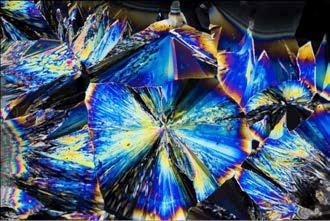

At the West Texas Geological Society Fall Symposium held in late September, I received the Society’s Honorary Life Membership Award, “in recognition of continued meritorious contributions of time and talent to the science of geology and to the West Texas Geological Society”. The attached photos show me receiving the award from WTGS President Dave Cannon of Diamondback Energy and with Holly Warnke of Chevron, former WTGS President. WTGS, located in Midland TX is comprised dominantly of geoscientists involved in the exploration for and production of energy. I feel fortunate to have been associated with WTGS over the past 4+ decades. This is quite an honor.

For what it’s worth, there really are some of us still very much active in the old school, largely conventional oil and gas business. After living and working in Midland, Texas for 32 years, we moved here to Houston in 2012. Our 3 kids and 7 grandkids now live here nearby. Our oldest son, Brett, an attorney, came to work with and for me in 2010. He now runs our family-owned operating and production company like I did for some 30 years. I now call him a “recovering” attorney.
After working the Permian Basin for many years, we gravitated into the Austin Chalk in the mid-90’s, then started working the Gulf Coast in the 2010’s. We now own and operate producing properties still in the Austin Chalk, up and down the Gulf Coast, and into South Texas. In 2019, we purchased some 200 wells in South Texas, which has kept us busy in the interim. Then in April of this year, we purchased another 400 wells in South Texas. About 80% of our production is now natural gas. Needless to say, we’ve been more than busy since. It’s been crazy, but a good crazy. And we’re having a lot of fun. We are even currently drilling two 9000’ laterals in the dry gas window of the Austin Chalk/Eagle Ford play in Webb County, Texas. We are now taking leases to maybe drill 15 to 20 more. Will let you know how it all shakes out.
Tim Carter and I have been working on a remembrance of things past, centered around the Old Tech Fenneman Room and how it enriched our academic lives. The link is below, I’d appreciate if you could take a few minutes to read, and then let us know what you think about it. It is posted on Tim’s Ask The Builder web page.

https://www.askthebuilder.com/ fenneman-room-geology-department-university-of-cincinnati/
Tim and I are writing another history, this one of Larsen’s 1972 Demonstration Field Trip to the four corners area. We were both on it, in fact it’s where we first met.
William Van Wie, Special Achievement, Geology MS ‘71,PhD ‘76

William Van Wie, A&S Alumni Special Achievement Award
Editor’s Note: One of our alumni, Susan Eriksson (ATT ’75), publishes a newsletter that focuses on how people see the Earth. Subscription is free, so you might give it some thought (https://earthtosusan.substack.com/p/our-sacred-earth).
The College of Arts and Sciences held its annual alumni awards and scholarship celebration, A Night with A&S, on March 8, 2023 at The Graduate Cincinnati. This year’s honorees included the A&S Special Achievement Award winner Bill Van Wie, MS ’71, PhD ‘76. The special achievement award is given to an
A&S alumnus for notable achievement in their field, continued service, and involvement with the university and community.
The 2023 Special Achievement Award recognized William A. Van Wie, who earned his master’s and doctoral degrees from the Department of Geology in 1971 and 1976, respectively.
Originally from Albany, N.Y., Van Wie attended St. Lawrence University, earning a bachelor’s degree in Geology in 1967. Afterward, he was accepted to study sedimentology at UC.
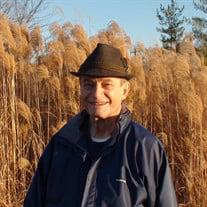
Van Wie received financial support from teaching assistantships, research grants and fellowships, facilitating his study under professors Wayne Pryor, Paul Potter, Warren Huff and Kenneth Caster.
Van Wie knew he wanted to be a geologist early on, becoming immediately enamored with the field upon taking his first course at St. Lawrence. After speaking with colleagues, he knew he needed to pursue advanced degrees and was encouraged to consider UC for its highly regarded geology program.
Eventually he worked for industry leaders such as Chevron, Pennzoil and Amerada Hess before joining Devon Energy Corp. in 1999. He rose to senior vice president, a role he held until retirement in 2010. Van Wie currently serves his profession as an advisory board member for the American Geosciences Institute, is a former board member of the National Ocean Industries Association, and a former Vice Chair of the Independent Petroleum Association for the American Association of Petroleum Geologists.
Van Wie’s most notable career achievement was being part of several oil and gas discoveries in the Gulf of Mexico where he participated in the industry transition from drilling on the shelf and mov -
ing into deeper waters exceeding 10,000 feet. Utilizing innovations in geophysics and engineering enabled industry to expand the Countries resource base to great levels. I t was this application of technology to exploring and producing oil and gas that excited him most.
Though Van Wie made many contributions in his professional field, he has always found time to support his local community. He has been a leader of several organizations in the Houston area, including as a member of the Boards of Directors for the Boys & Girls Club of Greater Houston and the Salvation Army. He is cur rently on the Board of Trustees for Trees for Houston, having previously served as President and Chair. Trees for Houston plants 50,000 tree per year in the Houston area.
Van Wie has continuously supported the graduate and undergraduate geology programs at UC, including most recently the Geology Alumni Graduate Fellowship Endowment Fund which supports student research.
A lover of rocks, nature, and family, Roy was the eldest of five boys. Growing up in the shadow of the Roy Clark Kepferle, born December 28, 1926, in Greeley, CO, to Dorothy Gladys (Ayers) Kepferle and Joseph Royal Kepferle, died on October
9, 2022, in Port Tobacco, MD, at the age of 95. The cause of death was end-stage renal failure. Rocky Mountains in the small Plains town of Dover, CO, in Weld County, surrounded by Ayers and Clark cousins including his “twin cousin” Gladys Ayers, Dad survived the Great Depression and the Dust Bowl, his father’s practical jokes, and the antics of four younger brothers. When teaching his brothers gun safety, Roy took his dad’s shotgun, and after telling them never to point it at anyone, pulled the trigger and blasted his parents’ mattress. On another occasion, in the era before Frisbees, they ran out of cow pies to toss and instead found old cracked plates at the back of the cupboard—Gramma’s antiques from her Kellogg family. Dad’s fond memories of growing up included singing, memorizing poems, hiking and fishing in the mountains, and getting his first car, a Model A Ford. Near the end of WWII, he signed up for the Army Reserve at age 17 at Fort Logan, CO, on May 20, 1944, and began studying pre-engineering at Fort Collins College A&E (now Colorado State). That summer, as part of the Army Specialized Training Program, he transferred to Yale University to study Japanese with classmates who called themselves the Ronin, or leaderless samurai. After turning 18, he entered active service on March 16, 1945, with the US Army’s 24th Infantry Division, formerly the Hawaiian Division (with Taro leaf patch). After basic training at Camp Maxey, TX, on the Red River, he was assigned again to study Japanese at the University of Minnesota in the Twin Cities. On February 27, 1946, he shipped out from Camp Beale, CA, as part of the US Army Occupation of Japan. During the 16-day voyage, he became sick, temporarily lost his hearing, and was hospitalized at Camp Zama, south of Tokyo. With his fellow translators dispersed, he was transferred to the HQ company as an administrative NCO, based first
at Okayama on Honshu and then on Kyushu. He rose to the rank of technical sergeant and after seven months in Japan was honorably discharged at Camp Beale on November 25, 1946, having received the Asiatic Pacific Campaign Medal, the World War II Victory Medal, and the Army of Occupation Medal.
Returning to civilian life, Roy took a year off to work and follow his love for rocks and the mountains, including hiking Longs Peak, CO. In 1947, he began studying geology as an excuse to get out in nature, receiving his BS in Geology/ Earth Sciences at the University of Colorado at Boulder in 1950. As a beneficiary of the GI Bill, he wanted to give back to his country, so he joined the United States Geological Survey (USGS) in 1950. After a brief stint in Washington, DC, he mapped eastern Montana uranium, coal, and shale deposits. While in Miles City, MT, Roy met Rhua Ethel Slavens on a Valentine’s Day blind double date. Married in Miles City on October 27, 1951, they moved wherever his USGS assignments took them, with children being born at each stay: Bowman, ND (Mary Rose); Rapid City, SD (Michael), where he completed his MS in Geology/ Earth Sciences at South Dakota School of Mines in 1953–54; and Denver, CO (Gregory). When the USGS sought a Japanese-speaking geologist to work in Tokyo with Japanese geologists to analyze Japan’s data on coal, gas, and uranium explorations from China and the South Pacific, Roy volunteered, despite being lead geologist on a project in the Dakotas. In 1956, with three children, Roy and Rhua traveled to Japan on the USS General William Mitchell, a converted troop carrier. The family enjoyed life in Tokyo and returned to the States four years later with two more children (Anne Marie and Mary Elizabeth). When assigned to map central
Kentucky, Roy moved his family to Elizabethtown, KY, at the end of 1960, where sons Christopher and Matthew were born. Life in Kentucky included long Sunday drives through the country singing cowboy songs, stopping for road cuts, and stalking the wild asparagus as well as geology field trips and fishing with his children, teaching geology at the local community college, and participating in Cursillo and retreats at the Trappist Abbey of Gethsemani. Once, because of his knowledge of the Kentucky backwoods, he joined a search party and saved the life of a threeyear-old boy who had been lost for over 18 hours.
Having been impressed by his Japanese colleagues respectfully calling him “Doctor” Kepferle, Roy took a study leave from the USGS in 1968, completing his PhD in Geology/Earth Sciences at the University of Cincinnati in 1972. With the family move to Cincinnati, daughter Theresa was born. After a brief stint on an early shale gasification project, he retired from the USGS in December 1981. In 1982, he accepted a professorship in the Department of Geology at Eastern Kentucky University in Richmond, KY, where he enjoyed taking his geology students on summer field trips to Dillon, Montana. After retiring from EKU in 1994, Roy and Rhua enjoyed researching genealogy and visiting family before Rhua’s death in December 2011 after a long illness.
With many of his children and grandchildren living near Washington, DC, Roy moved to Greenspring Senior Living Community in Springfield, VA, in 2014. There he enjoyed environmental dialogues, singing, walking, square dancing, and the ballroom dancing group where he met his beloved friend and companion, Penny Showell. Throughout the years, his natural curiosity as well as his love for family and planet Earth inspired him to travel to Rome, Florence, Germany,
the Grand Canyon, Denali, Yosemite, and the far edges of the North American continent from Tomales Bay to Iceland.
Roy touched many lives with his generosity, his teaching, his puns, and his classic martinis. He volunteered with civic and church groups wherever he lived: 4-H, the Optimist Club and PTA (Elizabethtown, KY); the St. Vincent de Paul Society and the Nature Center (Cincinnati, OH); and the Fairfax County Volunteer Solutions, the Catholic church, the Democrats, the Greenspring Choristers, and theater (Springfield, VA).
When asked what is most important for humans to think about in the universe, Roy combined his scientific curiosity, his love for humanity and nature, his gentle humor, and his personal faith. He replied that we need to think about the vast enormity of space and of time, the infinitesimal tininess and briefness of the human life, and the importance to do the most good we can with the life we are given. And then he added, “And God is in there somewhere.”
In his last days, interspersed with snippets of poems and songs, and musings on geology, the paradigm shift of continental drift, and sedimental feelings, Roy shared bits of his wit and wisdom:
“Gravity—it’s the law.” “Depends — the greatest invention since fire.”
“Life is a mystery.” “Spinach— to hell with it!”
When asked what he loved most about his life, Roy responded, “What a wonderful family I’ve had. What an enjoyable life I’ve had. What loving people I’ve met. A wonderful world.”
Roy passed softly from this life into the mystery on October 9, 2022, leaving his family and friends grieving his absence but celebrating his life and grateful for the love, joy, and delight they shared with him.
I am trying to compile a fun history of the “bullpen” paleo grad student office in the back of the Old Tech Paleo Museum. At least during my time on campus, it had a history and a sort of brotherhood that is somewhat reminiscent of “The Swamp” tent on MASH!
What none of us who’ve been in the loop seem to have, at least so far, is any pictures of The Bullpen, The Museum, or for that matter, much of anything from the interior of Old Tech. There are three blackboard archives that I wished I’d photographed back in the day. One of those is the “Paleo Seminar Blackboard/Scoreboard,” which I think probably still exists somewhere in the Department archives. I last saw it a few years ago in storage in the Braunstein basement among the Caster Library materials, just before they were moved to the Geology/Physics Library. Another which probably doesn’t exist but I wish did was a color photograph of the amazing stratigraphic columns that KEC swept across the triple blackboard in the 2nd floor lecture room during Historical Geology. He was ambidextrous, to at least a significant level. I never took the Historical class, but sat in on lectures from time to time…and I can still see Ken with colored chalk in each hand sweeping across the room with an absolutely amazing depiction of the type Devonian section of New York State!! The third board I wish I’d photographed was the board in the Sed Lab on the ground floor of Basic Sciences back in the day. It got used a bunch for scholarly work by the Bill Van Wie’s, Ken Fulton’s, and other notables of that era. But there was also a M.S. student on campus back then named Jim Rennison, a really bright guy who didn’t have a very good guiding rudder. I think he was a Pryor student, and I’m fairly sure he didn’t finish his degree. He was also a magnificent artist/cartoonist, and some really fantastic and bizarre things of his creation regularly appeared on the board over there. The one I remember most lampooned Larry Lattman…itself not a difficult task as Larry provided great material, but Rennison mastered it. Thinking of Larry’s caustic mannerisms and wit as well as his regularly present stogies, Rennison drew this Rube Goldberg-like cartoon of the “Lattman Fighting Tank and Cigar Launcher,” which was a military tank with Lattman’s face metallically embossed across its front, and his nose modified into a cannon that launched giant stogies at evil forces! You had to see it to fully appreciate it, geez I wish I didn’t hoard my camera film so much just for thesis pictures and field trip photos!!
Five Thousand Fun-Filled Miles of Geology: The 1972 Larsen Geological Field Trip Adventure in the American Southwest
By Timothy Dalbey, Phil Clymer, Tim CarterT his adventure log has been created to inspire young geology students to travel and immerse themselves in real geology rather than read about it in books. It’s also meant for professors who grasp that field trips are the absolute best way to motivate students to get excited about the scientific study of the Earth. This version includes primarily personal remembrances of events, activities, and observations. The full version includes detailed summaries of the geologic features we encountered on the 16 day trip. The “official” trip commenced just west of Albuquerque and ended at Garden of the Gods. Tim Dalbey penned most of the detailed geology descriptions and also included summaries for the trip from Cincinnati to Albuquerque and Garden of the Gods to Cincinnati.
This is a collaboration of three strangers that met on the infamous University of Cincinnati 1972 Geology 271 Demonstration Field Trip taught by Dr. Leonard Larsen. Those three are Tim Carter, Phil Clymer, and Tim Dalbey. Carter went on to become a custom home builder and media personality while Clymer pursued geology as a career and Dalbey obtained a PhD in archaeology.
Last year was the 50th anniversary of a fondly remembered event in the academic lives of a small group of aspiring geologists at the University of Cincinnati in 1972. The Geology 271 Demonstration Field Trip was scheduled for a journey to the Four Corners area of the southwest USA. Tim Dalbey’s road log measured the distance traveled as 4,831 miles, and the trip itinerary included stops at the Grand Canyon, Bryce, Zion, Petrified Forest and numerous other national and state parks.
The field trip was led by Dr. Larsen, a seasoned geologist whose main focus was hard rock igneous and metamorphic geology. It was an immersive experience for new geology students to put it mildly. Spending 16 days looking at the exposed bedrock of the southwest USA is one way to get young geology students excited about the science. It can also be a humbling experience if you absorb the enormity of it as can happen walking into and out of the Grand Canyon.
Request Full Article: Contact Warren Huff & request full document “Five Thousand Fun-Filled Miles of Geology: The 1972 Larsen Geological Field Trip Adventure in the American Southwest”
Editor’s note: The following alumni have written a marvelous article remembering Prof. Len Larsen’s 1972 field trip to the southwestern states. It’s available at https://issuu.com/huffwd/docs/1972_larsen_field_trip
Editors Note: Some of you may have seen this, but one of our alumni, Dr. James Harrell played a key role in reassembling it.

https://www.earthdate.org/episodes/the-oldest-geological-map
Editor’s note: William Haneberg (MS ’85, PhD ’89) Gave a virtual presentation on 2/16/2023 entitled Geohazards in the Anthropocene: A Risk Assessment Perspective. Dr. Haneberg is a research professor in the Earth & Environmental Sciences Department at the University of Kentucky, where he serves as the state geologist and director of the Kentucky Geological Survey. An abstract of his presentation is attached.
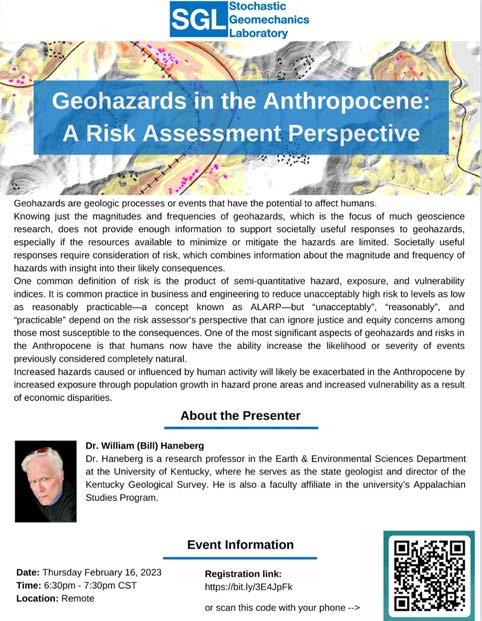
One of our alumni, Kenan Cetin (PhD ’92), an Environmental Services Professional, just posted this 5-minute video of his interview with the CEO of a major solar energy project in West Virginia.
“The video below was prepared by the WVDEP’s Public Information Office and is about a solar energy production project at a pretty large and formerly contaminated industrial site where they produced explosives for around 40 years. Now that the cleanup of the contaminated media is nearly completed in the site, the new ownerships and their partners will produce solar energy in about a third of the former property, amounting to nearly 400 acres, making it the largest renewable energy station in West Virginia. In the video, the Chief Operating Officer of the new owners and I say a few positive things about the collaborative efforts in getting the property cleaned up and how great a fit and useful the new solar energy production plant will be well into the future: https://www.youtube.com/watch?v=9_WKV2dyWS0
Here is a map link to point in the very center of the site: 39°32’18.9”N 77°52’35.5”W - Google Maps”
Editor’s note: Sarah recently published a Civil Engineering article: Can seismic instruments act as early warning systems for flooding?
https://www.asce.org/publications-and-news/civil-engineering-source/civil-engineering-magazine/article/2022/11/can-seismic-instruments-act-as-early-warning-systems-for-flooding
Dr. Maynard,
I hope the Pacific Northwest finds you well. Erin and I are expecting our 7th child on April 3, so everyone is very excited and exhausted, but healthy.
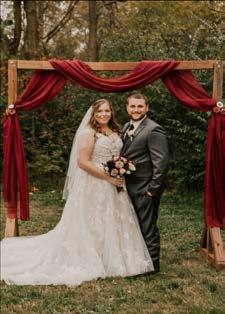
Are you and Tim Agnello still running Ohio Valley Landslides? I see landslides and slope stability in Cincinnati as a service line that the company I am with, Apex Companies LLC, may be able to develop. I was hoping you could educate me a bit on how business went for you and Tim and whether you were still actively pursuing work locally.
Participates in the Science of SpongeBob display
https://nhm.org/spongebob?fbclid=IwAR0GZoeOFSZkdgpI5ynEESzoXmAd8utP4ZDk6jmgKyxbkYJo5YCONtoogGU
Travel back in time to the prehistoric seas of Los Angeles with Museum Educator Justin Ramos and the Museum’s Assistant Curator of Invertebrate Paleontology, Dr. Austin Hendy. Dr. Hendy will dive deep into the history of our ancient oceans and introduce the weird and wonderful ancestors of your favorite SpongeBob characters. Although most of the fantastical organisms that populated our ancient oceans lived millions of years ago, these extinct ocean animals continue to impact our lives today!
Austin Hendy is the Assistant Curator of Invertebrate Paleontology. He’s toured the Seven Seas, but Dr. Hendy is especially interested in the fossilized ocean critters of tropical South America. He spends most of his time exploring the watery world of millions of years ago through fossils of incredibly tiny–but occasionally surprisingly big–marine animals without backbones.
I graduated in the fall of 2017 with a BS in Biology and a BA in Geology. One of my favorite classes while at UC was the field camp through NUI Galway. I got to spend almost 3 weeks mapping out the west coast of Ireland. On this trip, I learned a lot about not only the geology of Ireland, but also the culture and daily life of the local community.
In 2018, I started out as a geological technician for CTL Engineering. I was able to work with a drill crew doing soil logging at Buckeye lake and with construction crews on new build inspections.
In 2019, I received an opportunity to work as a survey technician at Woolpert. I started out doing residential and road surveys in the Dayton and Cincinnati areas. All the course work with topographic maps had paid off, because now I was collecting the data to create them.

I became an Aviation Crew Chief in 2020 at Woolpert where I work with the FFA doing airport surveys. Every few years, the airport has to report data to the FAA that includes locations of the runway ends, every light, every sign and navigational aids. I also have my Part 107 remote pilot license to fly drones in the controlled airspace at airports. I get to see some pretty cool things by working on airfields and meet some really interesting people. I get to travel constantly, as we do a lot of airports on the east coast. Some of the states I am frequently traveling to include Pennsylvania, New York, Connecticut, New Jersey, South Carolina and North Carolina.

I also got married to my husband, Wyatt in the fall of 2021 and we are now certified foster parents. We do not have a placement yet, but we are anxiously awaiting our first foster child.
My name is Daniel Pike, and I am a geologist with the DOI Bureau of Land Management (BLM) in Vale, Oregon. I graduated with my Bachelor of Science degree in Geology from UC in December of 2014. After graduating, I travelled around Central and South America for 6 months, before returning to the US to start my Masters program at Texas Tech University. I graduated with a Masters in Geology with an emphasis in sedimentology, and publication of my master’s thesis in the Paleogeography, Paleoclimatology, and Paleoecology Journal in 2018. While at Texas Tech I interned for Schulmberger, an Oilfield Service Company, during the summer of 2016.
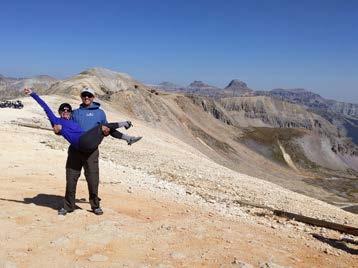
After graduating with my masters, I was hired as an intern through GSA’s GeoCorps program. As a recent graduate, this program provided me the opportunity to gain experience working in the government sector as a geologist. My first position was as a summer cave guide with the US Forest Service in Thorne Bay, Alaska. I guided guests on Prince of Wales Island through the El Capitan Cave system, the longest mapped cave system in Alaska, and provided interpretive tours. Following the completion of my summer internship, I was hired as a geologist GeoCorp intern with the BLM Royal Gorge Field Office (RGFO) in Canon City, CO. I worked in the Oil and Gas Fluid Minerals Program, and my duties included permitting new oil and gas wells, performing surface compliance inspections, ensuring protection of groundwater zones via surface casing, and preparing technical NEPA documents. In February 2018, I was hired on as a permanent federal employee with the BLM RGFO , and I have been working for the BLM since.
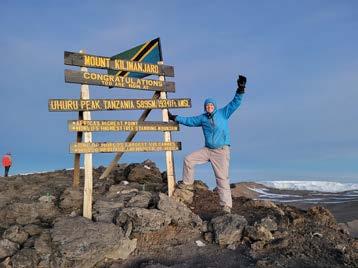
I recently transferred to a new field office at the BLM Vale Malheur Field Office in Vale, Oregon. Since the geology of this area is primarily igneous, I am now working in the Solid Minerals Program, metal and nonmetal mining sectors. Currently, I am working on a couple of large projects, including an underground gold mine and a largescale Lithium exploration project. One of the great things about working for the BLM is we have a multiland use directive, meaning we manage for a variety of uses including: mining, grazing, oil and gas, wildlife, and recreation. Careers with the BLM are a great alternative to positions in private industry or academia, and I have really enjoyed my time with the BLM so far. I can be reached at the following email address if anyone has questions about careers with the federal government, Geocorps internship positions, or if you just want to chat: jpike@blm.gov.

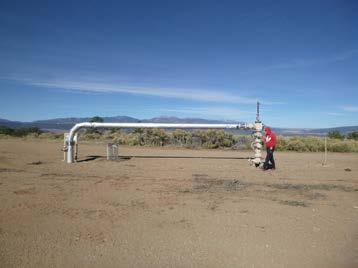
The Department of Geology at the University of Cincinnati (UC) used to have a magic room called the Fenneman Room. It was a room honoring the memory of Nevin Fenneman, a famous American geologist who taught for many years at UC. It was unique because it was a space set aside for undergraduate geology students. It was theirs alone and all graduate students and faculty crossed the threshold as guests.
The hallowed nondescript room met its dusty fate in 1990 when the high-strength steel talons of a giant yellow excavator machine transformed its plaster walls and ceiling into a pile of debris to be buried in an unmarked grave at a local landfill.

This is a slice of one of the bricks salvaged from the Old Tech building. Unfortunately, I believe the 1907 date is technically wrong. The building was built in 1901-02 and ready for occupancy in March of 1902. The full ownership of the building transferred to the College of Engineering at UC in 1907.
The Fenneman Room that was on the first floor of the Old Tech building has already transformed from history to legend because the now newer combined Geology/Physics building on the UC campus has no such gathering place for undergraduates.
This collaboration of memories between myself and Phil Clymer, a lifelong friend I met on my first geology field trip out West, is meant to preserve the memories created there and to inspire someone in the future to create a similar room at some college or university.
Here I am the summer of 1972. I was out West on my first geology field trip. Phil is the shadow in the passenger seat of Big Red, a beefy 4x4 International owned by the UC Geology department. I had met Phil for the first time just days before when about 20 of us went on a two-week Southwest field trip led by Dr. Len Larsen.
Phil and I spent countless hours in the room together along with many other geology students between 1972 and 1974. Other students got to enjoy the one-of-a-kind room for sixteen more years after we had graduated from UC. This article was created so the Fenneman Room doesn’t become a myth.
The Fenneman Room was extraordinary as you’re about to discover. It quite possibly was the only room on the vast campus of UC that was set aside for undergraduates. Lifetime friendships were born and nourished in this room. Some students, like me, got to see the relaxed side of a few of the brilliant professors that spent time with us undergraduates in the room when they popped in to chit chat.
It’s hard to believe that a simple 12x14-foot space in a 70-year-old brick building with 12-foot ceilings could have such a profound and lasting effect on geology students, but trust us, it’s true as you’re about to discover.
The New Geology/Physics Building
Are you a geology major at the University of Cincinnati as you read this? Perhaps you’re pursuing a graduate degree or are a faculty member. You no doubt spend lots of your time in the combined Physics and Geology building who’s foundation roots penetrate into the clay soil of what used to be University Drive, a public road that once extended east from Clifton Avenue into Avondale.
Request Full Article: Contact Warren Huff & request full document “The Fenneman Room at the University of Cincinnati Department of Geology”
Hey UC! My name is Eric Baumann and I have been the designer of the newsletter since 2019. Hope everyone has been enjoying the designs!
This time around, I thought it would be cool to share some of my work since graduating. I graduated with a BS in 2013 and started working as a contractor for the EPA in Cincinnati doing core analysis and soil chemistry. In 2017, I decided to pursue my love of museums and went to Johns Hopkins University and received my Masters in Museum Studies in 2019. After my degree, oddly enough, I moved away from pursuing a career in museum work and started doing a Post Masters with Oak Ridge Institute for Science and Education (ORISE). My project was studying the amount of metals that were aerosolized from 3D printer filaments during use. Here is the title to one of our papers if you are curious about reading this work:
“Metal compositions of particle emissions from material extrusion 3D printing: Emission sources and indoor exposure potentials”
This brings us to my current job, a permanent position at the U.S. Environmental Protection Agency in Research Triangle Park, NC. I work in the Office of Research and Development with the Atmospheric & Environmental Systems Modeling Division. Specifically, my team works on multiple projects ranging from remote sensing, modeling, worldwide collaborations, and more, all centered around air quality.
One of my major tasks includes the work on the Pandora Sun Spectrometer. The Pandora was developed to accurately measure columnar amounts of key trace gases (nitrogen dioxide (NO2), formaldehyde (CH2O), and ozone (O3)) and serve as a reference measurement for satellite validation. Pandora data products are based on the use of differential optical absorption spectroscopy (DOAS) which attributes differences in spectra measured by Pandora to the presence of trace gases within the atmosphere (i.e., the difference between the theoretical solar spectrum and measured spectrum is caused by absorption of trace gas species).

I act as the Lead Network Operator for a collective effort, now known as the Pandonia Global Network (PGN), which provides standardized, calibrated, and verified air quality data using common algorithms for data processing, instrument operating routines, quality control, realtime data processing and archiving. The PGN is a worldwide collective between EPA, NASA, Smithsonian, State and Local air quality agencies, ESA, Foreign companies, and Multiple Universities around the planet. Currently, we have 260 (and growing) Pandoras around the planet. As the Lead Operator, I manage multiple teams around the planet on ensuring the PGN’s standards and act as the representative between various groups and the PGN.
The Pandora also has another major purpose, to act as a primary means of validation for the TEMPO mission which will provide a better understanding of emissions, chemistry, and meteorology dynamics hourly across the USA. Excitingly, I attended the successful TEMPO satellite launch on April 7th, 2023 at 12:30am. Currently, we are waiting for the data to start flowing and validation will begin. The Pandoras will also be used to verify the other nations satellites when they launch.

While the majority of my day is filled with meetings, I find time to play with the data or work on one of my many other projects. With my position, I have the opportunity to travel often, set up remote monitoring stations, install pandoras, and even teach the importance of air quality to some of the participating universities. I have plans to continue diversifying my position and attempt to understand our air quality! Hopefully, in the next newsletter, I can share some other exciting projects I’ve been working on!
Cheers, Eric
Here are some links for the various things mentioned above!
BAHS - http://blueashhistoricalsociety.org/ PGN - https://www.pandonia-global-network.org/ TEMPO - https://tempo.si.edu/
Spring 2023
Andrew Blume, GEOL-BA
Jayden Kirchner, GEOL-BA
Azzan Alabri, GEOL-BS
Jacob Janszen, GEOL-BS
Nathan McCarthy, GEOL-BS
Bianca Neale, GEOL-BS
PJ Schomaeker, GEOL-BS
Tyler Scott, GEOL-BS
Olivia Canterbury, EVGEO-MIN
Mason Doyle, GEOL-MIN
Megan Corcoran, GEOL-PhD
Fall 2022
Zach Deluca, GEOL-BS
Colton Fields, GEOL-BS
Teagan Kleman, GEOL-BS
Jove Kohl, GEOL-BS
Aaron Wagner, GEOL-BS
Zach Good, GEOL-MIN
Anastasia Jones, GEOL-MIN
Summer 2022
Anna Dick, GEOL-BS
Reza Ershadnia, GEOL-PhD
Abigail Kelly, GEOL-PhD
It seems like I should make an official announcement about this.
As of last month, I am VERY pleased to announce that I have started on with Bruker BNA division in Madison, Wisconsin as an Applications Specialist for EMA (electron microscope analyzers). I’ll be your one-stop shop for applications information on Bruker’s QUANTAX EDS, EBSD, uXRF, and WDS.

I am thrilled to combine my geologic experience with my passion in micro-scale analysis, and I get to do this using Bruker’s amazing tech!


Since I graduated, I initially struggled to find a job in the geology field due to lack of openings and position cancellations from the pandemic. I was originally offered a temporary job from the National Park Service doing geologic interpretation at Sleeping Bear Dunes up in Michigan, but due to funding cuts from COVID-19, they had to cancel the position for the season. This led to me eventually moving out west to Salt Lake City hoping to find other job opportunities. I was able to nanny in the meantime and found a position as a naturalist with a local nonprofit here. I then began to apply for jobs with the Park Service again and landed a position in Sequoia and Kings Canyon National Parks as a physical science technician. My team’s main project for the summer was assessing the impacts of atmospheric deposition of copper and nitrate in fishcontaining and fishless alpine lakes. We were also involved with air quality and water quality monitoring looking at the presence of cyanotoxins in algal blooms. The position in Sequoia Kings Canyon ended late fall and I had some time off before returning to Salt Lake City, so I spent a little over a month in Thailand which is where this picture was taken! I explored northern Thailand for about a week, but spent most of my time in southern Thailand climbing and living there. I am now back in Salt Lake for the winter and ski season, but have plans of going back to Sequoia Kings Canyon to work as the lead physical science technician.

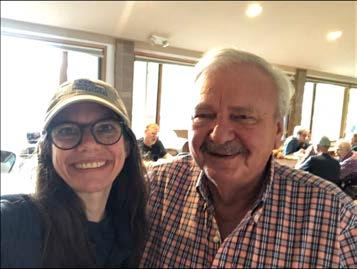
On September 9, 1972, six members of the Cave Research Foundation (CRF) connected two long caves—Flint Ridge Cave System (then 86.5 miles long) and Mammoth Cave (57.9 miles)—to make Mammoth Cave System indisputably the longest cave in the world at 144.4 miles. These cavers were John Wilcox, Richard Zopf, Steve Wells, Cleve Pinnix, Gary Eller, and Pat Wilcox (Crowther).
Recently, I had the opportunity to meet four of these amazing explorers and celebrate the fiftieth anniversary of their monumental accomplishment with them. On the evening of September 9, 2022, Richard, Pat, Steve, and Gary, with Cleve joining in remotely, presented their stories to a rapt audience of National Park employees, CRF cavers, and the visiting public.
Each of these folks related their stories from the time leading up to the Flint Ridge-Mammoth connection, and from the day of that cave trip. Steve Wells shared his memories from that time. He told the audience about how he was a graduate student in the Department of Geology at the University of Cincinnati (MS 1973, PhD 1976) at the time. His field work brought him, as it would also me many years later, to the caves of the Central Kentucky Karst. As I listened to him talk, I realized that the Steve Wells whose MS thesis I had read several times while working on my PhD was the same Steve Wells who had been a part of one of the most amazing days of caving in history. It blew my mind that I was sitting here in the presence of these role models of caving and that I had just learned of a UC Geology connection with one of them.
When the presentation was over, I walked up to the dais. I introduced myself to Steve and pulled my phone out of my pocket, where I had his MS thesis open in a pdf reader, having scanned it a few years before and stored it on my phone to read on an airplane. By the way, for an excellent read, head down to the lower level of the Geology-Mathematics-Physics Library, where you will find a copy of Wells, Stephen G. “Geomorphology of the Sinkhole Plain in the Pennyroyal Plateau of the Central Kentucky Karst.” M.S. Thesis, University of Cincinnati, 1973. Needless to say, he was surprised to learn of this connection, too. Back at CRF’s Hamilton Valley Research Station, we had more conversations about research, caves, life. It was wonderful meeting a hero of mine and learning about all we have in common!
The next day, I was honored to be included as one of the guides for a National Park Service (NPS) cave tour to the connection site. I interacted with visitors, listened to Richard Zopf recount his connection story in the place where it happened, and led one tour stop where I shared with the visitors and other guides (all either CRF or NPS representatives) my scientific motivations, curiosity, and current cave geology projects in the Mammoth Cave area.
This weekend spent at Mammoth Cave National Park has me feeling grateful for connections—the connection that was made between the Flint Ridge Cave System and Mammoth Cave, the multiple connections between UC and CRF, and the old connections and newly formed connections between people that make all of this beauty possible.
If you would like to read more about CRF, the history of cave exploration and mapping in the Mammoth Cave area, and the 1972 connection, I recommend this engaging book: Brucker, Roger W., and Richard A. Watson. The Longest Cave. New York: Knopf, 1976.

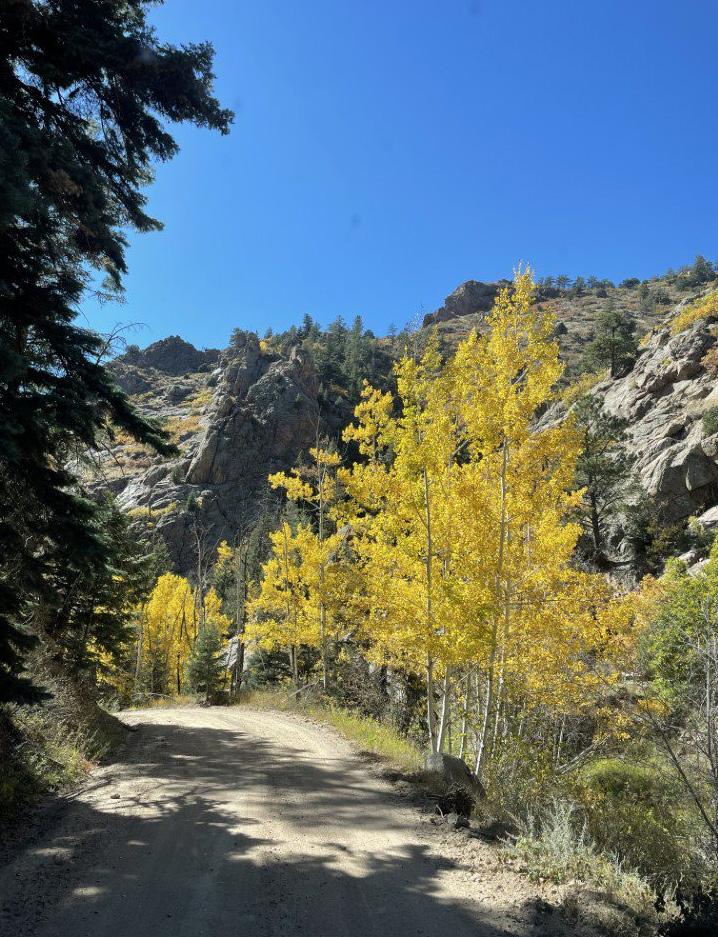
Students are the life blood of any academic department. The latest data show that about 7,500 undergraduates are in the College of Arts and Sciences, a College with 37 majors, 27 minors, and 51 certificate programs. Geology majors self-select. Other departments that require a Geology course or two are scant and we all know how earth science courses in middle school and high school few are and far between. Our students typically find geology on their own. The number of our majors is by no means large which, for them, has great advantages: (relatively) small classes, getting to know their teachers, and building strong social networks. Our students are interested in a wide range of specific topics in the geosciences, and many of them want to get involved in research. What they commonly bring to us by becoming majors is a genuine enthusiasm about and commitment to their chosen field of study. The Department would like to recognize the following set of students for their particularly strong work and participation in our undergraduate program and in the life of the Department. On to the awards!
The John L. Rich Award
John L. Rich (1884-1956) was a giant of the Department. Rich studied geomorphology, strabgraphy, structural geology, petroleum geology, petrology, and tectonics. Nevin Fenneman hired Rich as assistant professor of economic geology in 1931. After Fennemen retired, Rich became chair of the Department in 1941, a position he held until 1955. Rich was highlighted in FFN v. 2, no. 5 (2/14/20). As I wrote then: “After reading about J.L. Rich, I am impressed with his comprehensive interest in geology, and his ability to integrate diverse topics into an understanding of our complex planet.” The John L. Rich Award is one of our most prestigious awards and is given to our top graduating senior.
Aaron Wagner
I think I have always been interested in geology and paleontology, be it collecting hundreds of pieces of quartz and other minerals during elementary school or hunting for fossils in the dolomite rocks that lined my pond. My interest in geology is mostly aligned with fossils and minerals, exploring to find something interesting, in other words. Meeting Carl and attending his classes was a wonderful experience, especially counting the field trips where I was able to help my classmates by lending a hand or tool. After graduation I’m hoping to get into the field and just see what I can learn and do to help further the field.
The Department has more students than ever minoring in Geology (ah, but to be a major!) Students majoring in the Environmental Studies program are required to have a minor and many of them choose Geology. Commonly, they discover that their true interest is in science and so they progress through our intermediate- and upper-level courses, often ending a bit shy of the credits needed for our major. Our Geology Minor Award is new and a way to welcome Geology minors and recognize their academic achievements.

Trenton participating in an electrofishing survey of the Mill Creek I’m a rising junior majoring in Environmental Studies and minoring in Geology. I’m currently working as a Park Ranger at the US Army Corps of Engineers at East Fork Lake as well as working in the Dr. Mike Booth Lab in the Biology Department on campus. I’m broadly interested in aquatic ecology, hydrology, and environmental education.
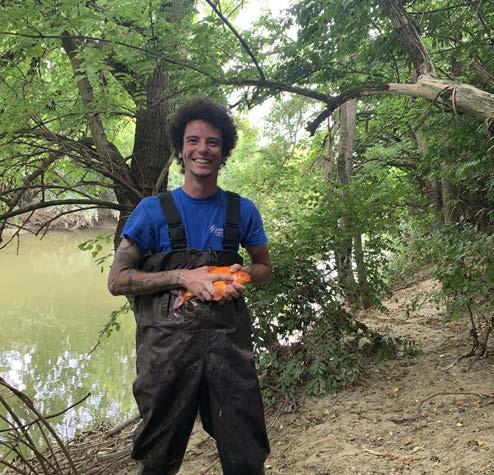
Alumni Walter and Katherine Cook generously endowed a series of awards to encourage up and coming geology students. Cook Scholarships recognize undergraduates who are among our top scholars. In past years, we have awarded Cook Scholarships to a “Rising Freshman”, a “Rising Sophomore”, etc., but in reality our students’ positions in our program just don’t coincide easily with the traditional breakdown of the four years of a college degree. These awards are based on GPAs, of course, but also on our judgments of who is engaged in their work, with the Department, the faculty, and with their peers.
Teagan
Since transferring to UC mid-pandemic two years ago, my experience has been nothing short of amazing. Through the change of transferring universities followed by a switch in majors— from environmental engineering to geology— I am nearly finished with my senior year. I’ve supplemented my major with a minor in environmental analysis and policy, and am proud to have made the Dean’s List every semester. This summer, I will work on an ongoing NSF project managed by Dr. Reza Soltanian at the Theis Environmental Monitoring and Modeling Site (TEMMS) in Miamitown, Ohio. My role will focus on water sampling and analysis, which I will complete as part of my capstone. Together with fellow undergraduate student Colton Fields and doctoral student Tyler McGarr, I will work to provide insight into how surface water and groundwater interact through hyporheic exchange.
Abby George
Hello, I’m Abby George. I’m an undergraduate geology student, and I’ll begin my second year this fall! I’m the Vice President of the Geology Club, and I work as an assistant in Dr. Andy Czaja’s lab, where I’m helping to create 3D models of the inside structures of stromatolites. Geology has so far Page 4 of 8 been a very welcoming and rewarding major, and I’m excited to see where my education takes me! (Editor’s note: Abby’s GPA is 4.0 and she is in the College’s Honors Program.)

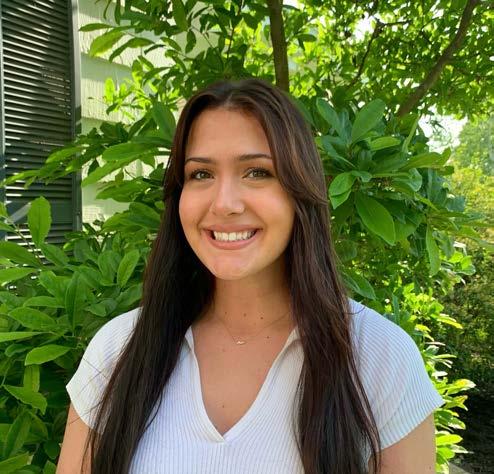
Emma
Hi! My name is Emma Phipps and I am now a 2nd year majoring in Geology and Environmental Science! I am a full time student at UC and I also work full time as a manager at Chipotle! This summer I am working on undergraduate research with Professor Dan Sturmer looking at seismology in Cincinnati along with attending a trip to look at the Spruce Mountain landslide in Nevada! I am very passionate about geology and am excited to continue learning!
Nina NashThe Department has given a long-running series of grants to help defray expenses for our students attending field camp and equivalent Capstone Experiences. Field camp and field experience still stands an one of the essential pillars of our discipline. The pandemic has changed when and where our students attend field camp, and has brought to the fore the understanding that not every student can attend (or, in fact, may have other plans for a researchoriented capstone). Nevertheless, the Department is proud to recognize our students who have already participated, or are planning to participate this summer in a field experience. Page 5 of 8 Megan Hamilton -- South Dakota School of Mines, Black Hills Azzan Al-Abri -- South Dakota School of Mines, Petroleum Camp Aaron Wagner -- South Dakota School on Mines, Paleontology Camp Zach Deluca -- Western Kentucky University, Karst Field Studies Austin Gentry -- University of Arizona Field Camp Jake Janszen -- Kent State University Field Camp GROGU* AWARDS Patrick Boylson -- Drone-based, high-resolution LiDAR topography at the Cooper Creek Experimental Watershed PJ Schomaeker -- Did the Acadian Altiplano extend to southwestern New England? A thinsection and study of metasediments from southwestern Connecticut Nathan McCarthy -- Competition and Overcrowding as Exhibited on A New Edrioasteroid (Echinodermata)-Encrusted Hardground from the Upper Ordovician (Katian) of the Cincinnatian Mason Doyle -- Research Field Work on the Spruce Mountain Landslide, Nevada *(altogether now, “Geoscience Research Opportunity Grants for Undergraduates”)
We are presenting this special award for the 15th time. This award commemorates Myles Redder, a former student who died unexpectedly early in 2008, following a tragic accident. Myles was an enthusiastic participant on field trips and took part in many teaching and research expeditions, including the Department’s inaugural trip to the Himalaya in 2005. Wherever Myles went, he helped to foster a sense of camaraderie and enthusiasm for field study and for geology, for politics, and for life in general. Myles was a sharp student of the Earth, and he genuinely loved geology, and its people and places. His spirit lives on in this award. The generosity of Myles’s many friends and relatives helped the Department launch the Myles Redder Award in his honor and memory, and their continuing support has allowed us to make another award. The Department sincerely appreciates their support of the Redder Fund, which remains strong. The Department uses the Fund for an award for an undergraduate Geology major who has demonstrated excellence in geology and a strongly independent, helpful, can-do attitude.
PJ SchomaekerPJ Schomaeker grew up in Cincinnati and is now going into her last year at UC. She has always been fascinated by the Earth, its diverse processes, and humans’ place in them. She enjoys learning about almost all fields of Geology, but during her time at UC she has become most interested in studying metamorphic petrology and Earth’s tectonic processes and history. Her goal after graduating is to do work in environmental consulting and climate change mitigation. She is also interested in working to better methods of science communication with people of diverse ages and communities. Outside of Geology, she likes to read and do different types of art.

This is a special award, anonymously endowed, which recognizes students who have been strongly engaged in our departmental culture and activities, including our social events, the Geology Club, our colloquium series, field trips, Career Days, and other opportunities.
Alex Rasool
My name is Alexander Rasool and I’m currently entering my second year at the University of Cincinnati. I am majoring in Geology and minoring in Biology. I grew up in Greenville, Ohio and graduated from Greenville Senior High School in 2021. My goal is to obtain a Bachelor of Science in Geology. Eventually, I want to work towards a PhD and specialize in Vertebrate Paleontology. I was elected as the president of the UC Geology Club for the year of 2022. I have a huge passion for Paleontology, and I am very thankful for this award. I look forward to the rest of my time at the University of Cincinnati.

Bianca Neale
This semester I finished my 3rd year at UC, I’m majoring in Geology and Biology and am planning on attending graduate school. Currently, I work with Dr. Josh Miller, Dr. Carl Brett and Dr. Takuya Konishi doing different types of paleontological research. I’m thankful for all the opportunities that they have given me, and I look forward to continuing my work with them as I enter my final year at UC.
 Nathan McCarthy
Nathan McCarthy
Born in North Ridgeville, Ohio, I have spent much of my adult life roadtripping and pursuing different careers. Now I am finally on my path to become a Paleontologist, my all-time dream career since I first learned about fossils as a toddler. I’ve been at UC since August 2020, transferring from Ely Community College in Minnesota with an Associate Degree in Fish and Wildlife Management. I’ll get my Undergraduate Degree here in April 2023 and am going straight to Graduate school to further my education and career opportunities. I also love my cars!
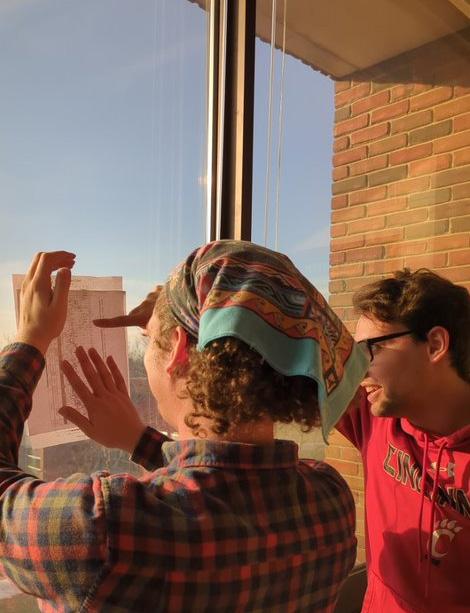
Reza Ershadnia, MS
Rachel Bosch, PhDCompleted Graduate Degrees!
Fall 2021
Reed Sanchez, MS
Christopher Aucoin, PhD


Spring 2022
Abby Kelly, PhDNeedless to say, the faculty values all our teaching assistants. We take our teaching seriously and recognize that our “total student credit hours” (even more so than majors) are a key metric bearing on the vitality and relevance of the Department. Excellence in teaching should be prized more than ever. These awards were established in the 90s (I think), to recognize TAs who have made particularly strong and dedicated contributions to the undergraduates in our classes (beyond the grind of grading papers); for example, by designing and running labs, writing lab manuals, mentoring students in and outside of class, delivering lectures, being role models in the lab, and during this past year, helping run health-and-safety-first field trips. During the past couple of years, our PhD-level graduate students have taken on teaching some of our lab courses. In doing so, they gain valuable teaching experience, achieve personal goals, and provide the time for others to pursue their research goals.
Sam Little for Sam’s all-around contributions to mid-level course this past year.
For their spirited work and commitment to teaching undergraduate students in Geology 1003 Physical Geology Lab (one of the classics!)...


Clark Ward
“A multi-isotope reconstruction of resource partitioning among large ungulates from Ashfall Fossil Beds State Historical Park, N ebraska.”
Watts Dieterich
“Characterizing the impacts of diagenesis on a diatom biomarker.”
Jonas Zajonz
Maddie Gaetano
“Evaluating the role of female caribou antlers as post-natal mineral supplements.” Maddie is a third year PhD student working in Josh Miller’s bone ecology lab. She is interested in how different bones are recycled as nutrient sources on landscapes, particularly bones that are regrown and shed annually (antlers). Maddie’s research is primarily focused on caribou bone material collected from the Arctic National Wildlife Refuge, Alaska, where she is excited to complete fieldwork this coming August.
Vince Nowaczewski
“Mapping the Hogan Basin.” Vince also was awarded these grants: from the Society of Economic Geologists, “Unraveling Late Paleozoic tectonism in eastern Nevada with geologic mapping and stratigraphic analysis in the Spruce Mining District, Pequop Mountains.” And from the Nevada Petroleum and Geothermal Society, “Unraveling Pennsylvanian tectonism with mapping in the Spruce Mining District, Pequop Mountains, NV.”
Sam Little
“A Detailed View of the Richmondian Invasion (Late Ordovician, Cincinnatian): Facies Partitioning of Incumbents and Invaders.” I am a Master’s student working with Dr. Brett on understanding faunal changes during the Richmondian invasion, a late Ordovician species invasion. My future plans are to finish my Master’s, then apply to PhD programs, and pursue a career in academia. Thank you for recognizing me, being part of this department as an undergraduate and now a graduate student has been an amazing experience.
The Paul Edwin Potter Geology Fund was founded by UC Geology Alumni/Alumna William B. Harrison, Linda A. Harrison, and Wayne Goodman to honor Professor Potter for his iconic career as an outstanding geological researcher and educator, and for his many noteworthy accomplishments. It is funded through contributions from former students and professional colleagues and friends. The Potter Scholarship provides a stipend to an outstanding graduate student who is pursuing scholarly research in the “Potter Disciplines”—including sedimentology, stratigraphy, sequence stratigraphy, basin analysis and evolution, stratigraphic geophysics, sedimentary petrology and petrography, and paleoecology. In keeping with Dr. Potter’s long-time interest and achievements, notably as a highly renowned consultant in the energy industry and his distinguished lifetime status in the AAPG as a leader and honoree, an interest in pursuing an energy-related career is considered a plus but is by no means a prerequisite. The fund made its first award in 2015; the 2022 award will be the eighth award made to an exceptional graduate student.
Vince NowaczewskiI grew up in Ypsilanti, MI (Ann Arbor-Detroit region) where most of my family still lives. My schooling includes a B.Sc. 2009 from Lake Superior State University (micropaleontology focus—conodonts) and an M.Sc. 2011 from the University of Kansas (molecular paleontology—geolipid biomarkers). After B.Sc. and M.Sc. schooling I worked in Oklahoma for 8 years as a geologist and petroleum geochemist in development and geoscience technology roles at Chesapeake Energy.
During my industry work I became intensely interested in computational stratigraphy through a 2013-2014 R&D project. This interest in subsurface modeling eventually led me to UC in 2020 to pursue a Ph.D. under the direction of Professor Dan Sturmer. Now, my research purposes are to apply or improve structural-stratigraphic numerical methods for simulating sub-surface architectures and contribute towards the philosophy of method benchmarking and comparison, application to natural systems, and deployment as teaching tools. Field work is an essential component of attaining this goal and therefore I am excited to be mapping part of an exposed Pennsylvanian basin in northeastern Nevada this summer.
I am energized by teaching and have enjoyed helping facilitate undergraduate courses at UC. I am also happy when sharing knowledge or experiences with others, discussing ideas both big and small, and all those other intellectual gems that may exist in between. I plan to make the most of my time as a member of enriching communities within the Cincinnati area, and to be open to learning as much as I can from the dynamic people within the UC Geology Department. I am grateful and humbled to be the recipient of the 2022 Potter Scholarship and look forward to putting it to good use during field work this summer.
More Awards!
Ohio Geological Survey Cole Farnam

UC Chapter of Sigma Xi, Grants-in-Aid-of-Research
Emily
Clark Ward
Maddie Gaetano
Graduate Research Awards
Clark Ward
University Research Council
Meg Corcoran
Maddie Gaetano
For my Master’s project, I am investigating stable isotope paleoecology of large mammalian herbivores from the Nebraskan late Miocene site Ashfall Fossil Beds. I am interested in species-level and community-level paleoecology as well as extinct and extant herpetofauna.

My first year as a PhD student has been a busy one. I have been focused on investigating PFAS fate and transport in the subsurface. My research interest was largely inspired by a hydrogeology research internship I have held for the last year through the Air Force Institute of Technology (AFIT) and Oak Ridge Institute for Science and Education. During Fall 2021, my major focus was diving into the PFAS literature and preparing a review paper, “PFAS Fate and Transport at AFFF Discharge Sites: A Review,” which we plan to submit for publication to Critical Reviews in Environmental Science and Technology pending clearance from AFIT. This spring, I kicked off my own PFAS research with characterization of PFAS sorption behavior in buried-valley aquifer material collected at the Theis Environmental Modeling and Monitoring Site (TEMMS) in Miamitown, Ohio. These experiments have been performed in collaboration with Dr. Drew McAvoy of UC Environmental Engineering. With help from my advisor Dr. Reza Soltanian and his postdoc Ali Meyal, I also began a novel investigation of PFAS fate and transport in the hyporheic zone—where groundwater-surface water interactions occur—using a numerical modeling code called PFLOTRAN. This summer, I will work with Dr. Soltanian and two undergrads, Teagan Kleman and Colton Fields, to investigate groundwater-surface water interactions at TEMMS. I will also continue my PFAS investigations through a combination of lab work, modeling, and field sampling at TEMMS.
Reza ErshadniaReza Ershadnia is a PhD candidate whose research interests lie at the intersection of chemical engineering, environmental engineering, and geoscience. His research is focused on understanding the physics and fluid dynamics of multiphase flows and reactive transport in heterogenous porous media. In particular, he utilizes high-performance computational tools to study the effects of subsurface geological heterogeneities on different gases (e.g., CH4, CO2, and H2) migration in shallow and deep aquifers.
His most recent publication, “Capillary Heterogeneity Linked to Methane Lateral Migration in Shallow Unconfined Aquifers”, in Geophysical Research Letters describes how geological features at different spatial scales (from millimeter to meter) control the behavior of gaseous CH4 in shallow aquifers. Along his Ph.D. journey, Reza completed a M.Sc. thesis in our Department last year which focused on CO2 storage in deep aquifers and his study entitled “Hydro-thermo-chemo-mechanical modeling of carbon dioxide injection in fluvial heterogeneous aquifers” was published in the Chemical Engineering Journal. Currently, Reza is developing a machinelearning model to replace by numerical simulations for capturing CH4 fate and migration in groundwater systems.
Reza was one of the recipients of Dean’s Dissertation Completion Fellowship for the 2022–23 academic year. However, he decided to decline the offer as he got a Postdoctoral Fellow position at the University of Texas at Austin (Jackson School of Geosciences) and will be heading to Austin by July.

Abby recently defended her dissertation, titled “Survival of the flexible? Niche breadth and persistence for bison and horses of Beringia” and has started work as a scientific editor at One Earth, a relatively new journal out of Cell Press that publishes research addressing grand environmental challenges. Abby feels quite bittersweet about leaving Cincinnati — she has learned a lot while completing her Ph.D. in the Geology Department and has had some great adventures as part of the Miller Bone Paleoecology lab. There’s a lot to miss! Still, she is enjoying the challenge of her new work (which she found thanks to the alumni network!) and is looking forward to moving to Boston.
Ken Caster AwardThis award has traditionally gone to a graduate student studying paleontology. Caster published an article on the “Cincinnati School of Paleontology” (History of Geology, v. 1, no. 1, 1983, p. 23-28) and the text can be found here: http:// homepages.uc.edu/~huffwd/Department_History/Caster_Paleontology.htm
University of Cincinnati Published in: History of Geology, v. 1, no. 1, 1982, p. 23-28 The Cincinnati “School” of Paleontology . Kenneth E. Caster (1908-1992) University of Cincinnati homepages.uc.edu
Caster wrote: “The “Cincinnati School” was predominantly a long succession of fossil collectors. This hobby, popular since Cincinnati’s earliest days, was inevitable in a place so richly endowed with fine Ordovician specimens.” (from FFN v. 1, no. 13, highlighting Ken Caster). Nowadays, we understand that paleontology is a major component of Earth systems history, the study of how environment, climate, and biodiversity (as assessed through paleontology) are inter-related. This reflects a broadening of the discipline to investigate the co-evolution of life, the environment, and climate on Earth, played out over hundreds of thousands and millions of years. With climate disruption upon us combined with new analytical tools (particularly stable isotope geochemistry via mass spectrometry) perhaps Ken Caster would understand why a significant portion of the Department’s current work in paleontology is focused on well-preserved Cenozoic systems.
Emily SimpsonI’m a PhD candidate with an interest in paleoecology. My interests are broad, but my current research is focused on using carbon and oxygen isotopes to tease apart the niche partitioning of a mammal community in Eocene-Oligocene Egypt. I’ve worked in museums for most of my life at this point and spend a lot of my spare time helping a small, local museum revamp their paleontology-related exhibits and outreach. My husband and I also enjoy exploring everything about new places together, including their natural history and stories.


Mr. Jason Adler
Aethon Energy
Applied Science & Engineering LLC
Ms. Mary F. Bishop
Ms. Lisa Bohl
Mr. and Mrs. Joseph W. Breuer
Mr. Ronald F. Broadhead
Mr. and Mrs. Leland W. Burton
Ms. Margaret Byer
Mr. and Mrs. Paul J. Cosgrove
Mr. Gregory Cui
Dr. Andrew D. Czaja
Dry Dredgers, Inc.
Ms. Susan M. Dunlap and Mr. Jesse Simmons
Edison International Company
Robert J. Elias, PhD
Dr. and Mrs. Frank R. Ettensohn Federal Trade Commission
Mr. and Mrs. Robert A. Ferree
Dr. and Mrs. Douglas J. Ford
Mr. and Mrs. John R. Ford
Linda P. Fulton, PhD
Ms. Janet G. Gasper
Ms. Evelyn M. Goebel
Mr. and Mrs. Wayne R. Goodman
Ms. Rachel Granetz and Lee Farnsworth
Lucille and Richard Durell Special Fund at the Greater Cincinnati Foundation
Dr. and Mrs. John E. Grover
Ms. Andrea J. Haas
Mr. Dominique M. Haneberg-Diggs
Dr. and Mrs. Warren D. Huff
Ms. Susan M. Ingmire
Drs. Jacek and Marzena Jaminski
Mr. and Mrs. S Duff Kerr, Jr.
Mr. and Mrs. Brad Kimball
Ms. Elizabeth A. Krebes
Mr. and Mrs. Michael P. Krueger
Ms. Elizabeth Kurman
Mr. and Mrs. Jerome H. Lipsky
Mr. Peter J. McKinney
Dr. Arnold I. Miller and Ms. Mary J. Montenegro-Miller
Ms. Vivian Nash
Dr. Brian L. Nicklen and Mrs. Keri Nicklen
Dr. and Mrs. Osborne B. Nye, Jr.
Dr. and Mrs. Alan E. Oestreich
Ms. Abigail E. Padgett
Mr. and Mrs. William Placke
Ms. Mary L. Pojeta
Ms. Eleanor R. Poole
Dr. and Mrs. John K. Pope
Mr. Eric M. Redder and Ms. Michon D. Woods
Dr. Stephen P. Reidel and Ms. Mary R. Knight
Mrs. Cornelia K. Riley
Mr. Edgar W. Roeser
Mr. Tod W. Roush
Salvatore Prescott Porter & Porter, PLLC
Dr. Frederick C. Shaw
Shell Companies Foundation, Inc.
Dr. and Mrs. Frederick E. Simms
Dr. and Mrs. James T. Teller
Mr. and Mrs. Thomas E. Uhl, RPA
Dr. Roy B. Van Arsdale and Mrs. Stephanie K. Van Arsdale
Mr. and Mrs. Victor V. Van Beuren
Dr. Ruth Anne Van Loon
Dr. and Mrs. William A. Van Wie
Dr. and Mrs. Gregory P. Wahlman
Dr. and Mrs. Steven M. Warshauer
Dr. Julia L. Wise
Ms. Jenea L. Woods